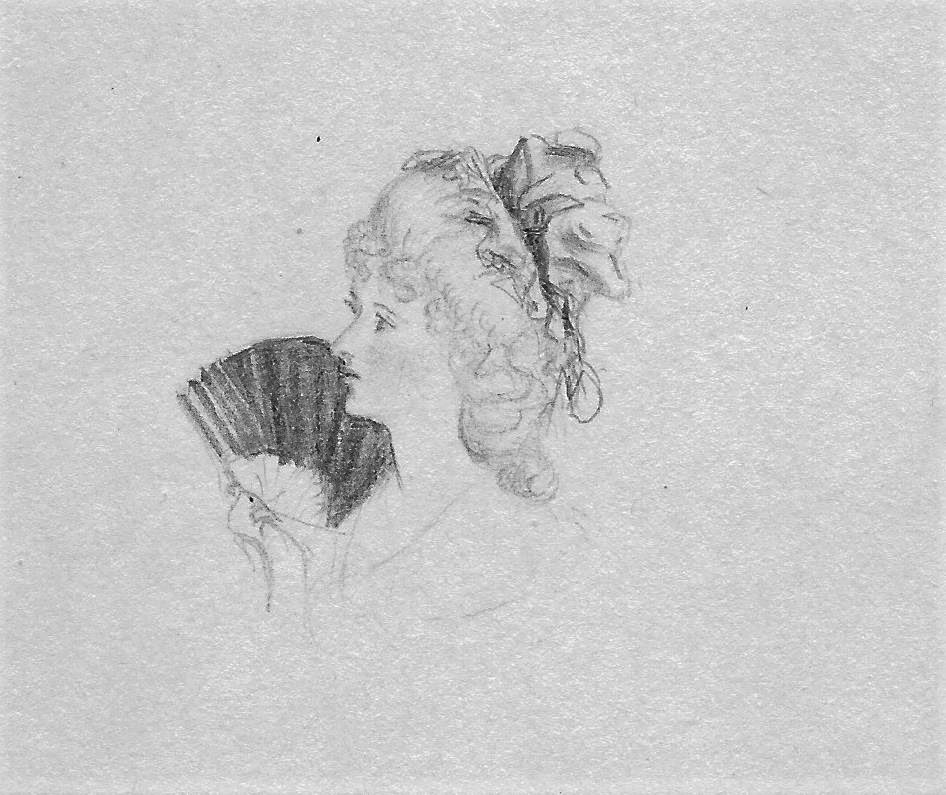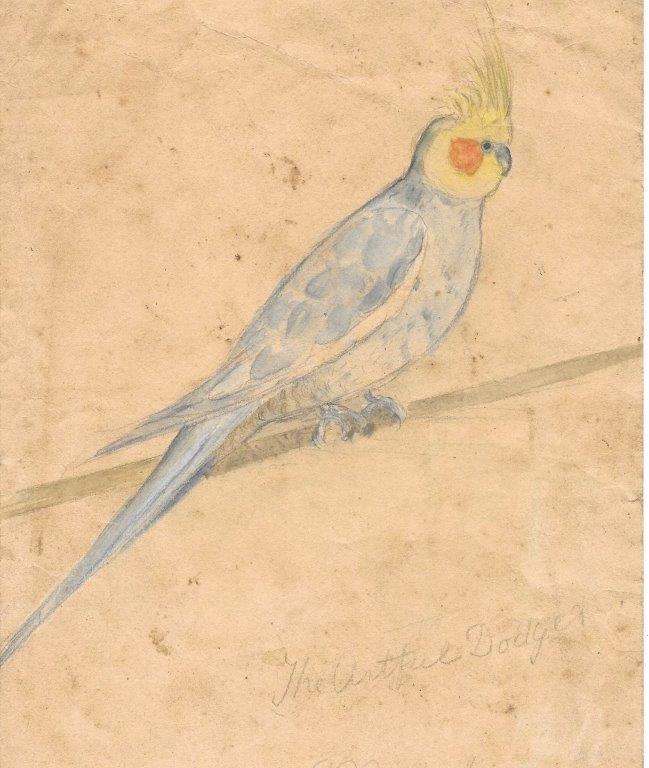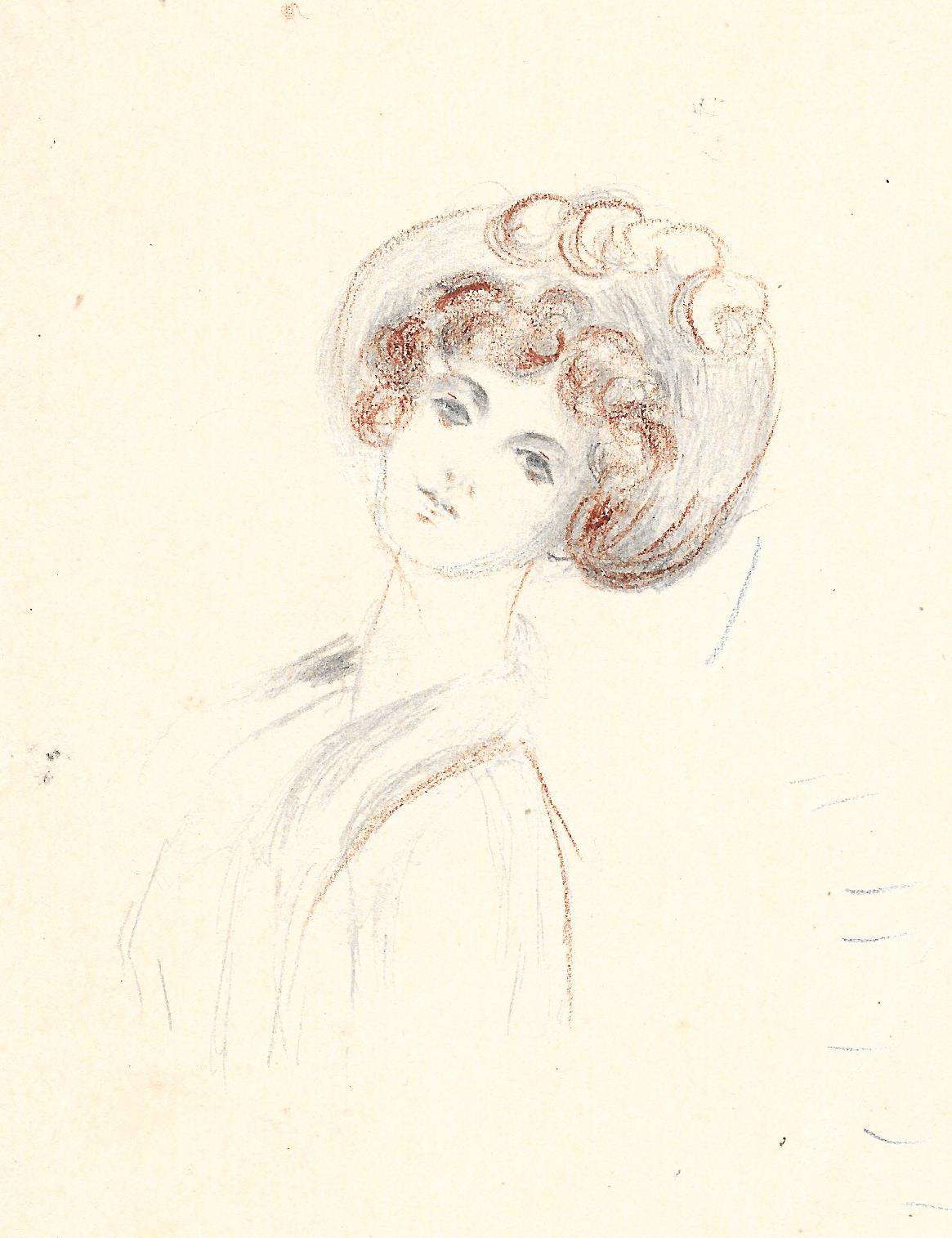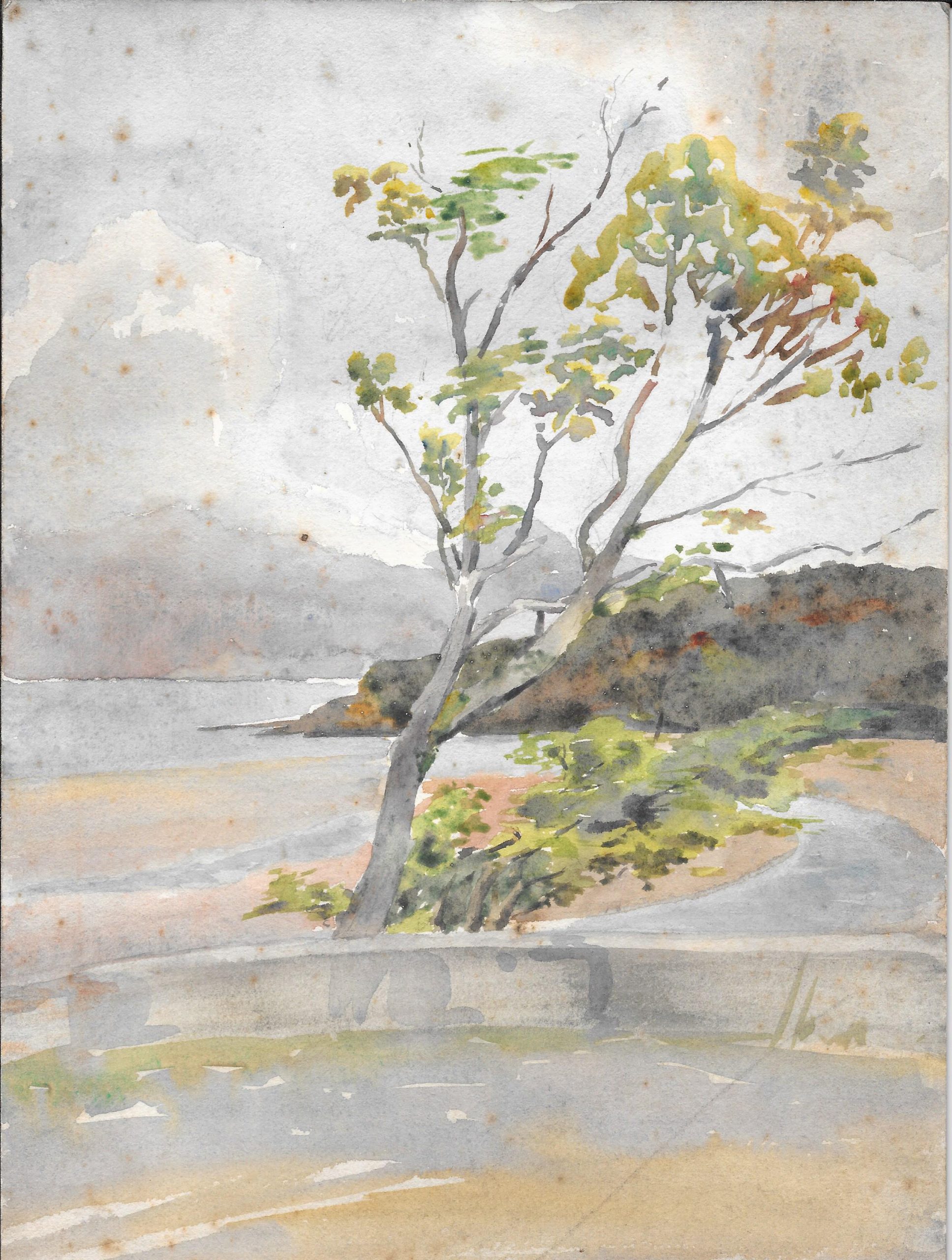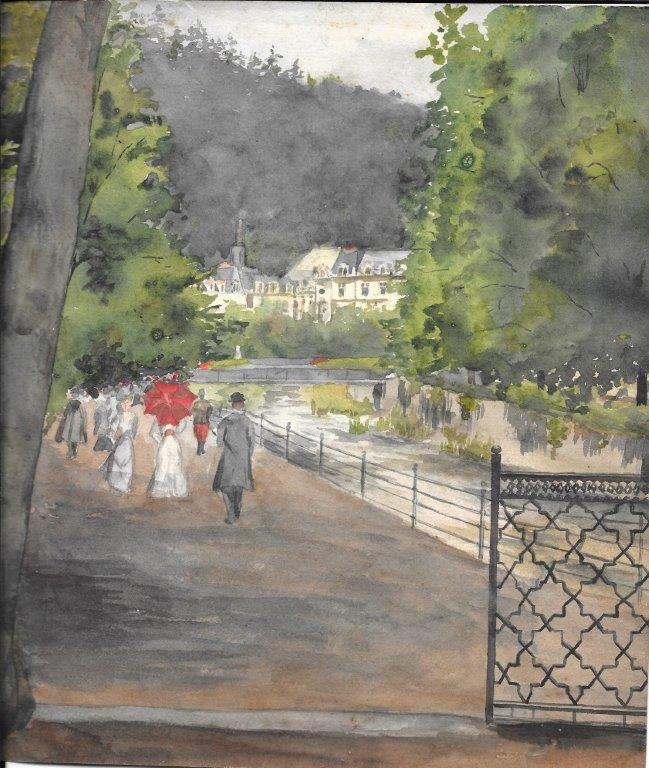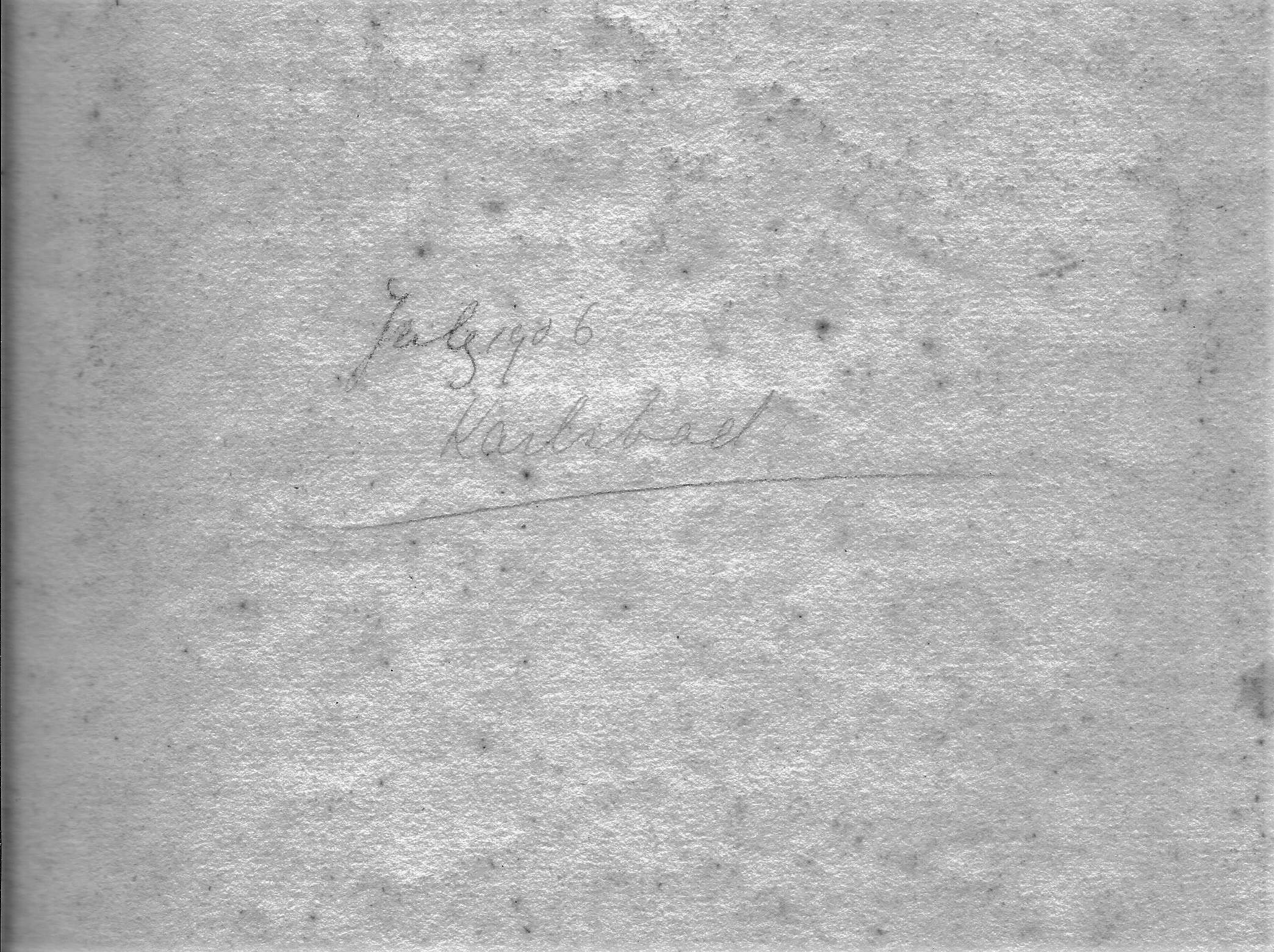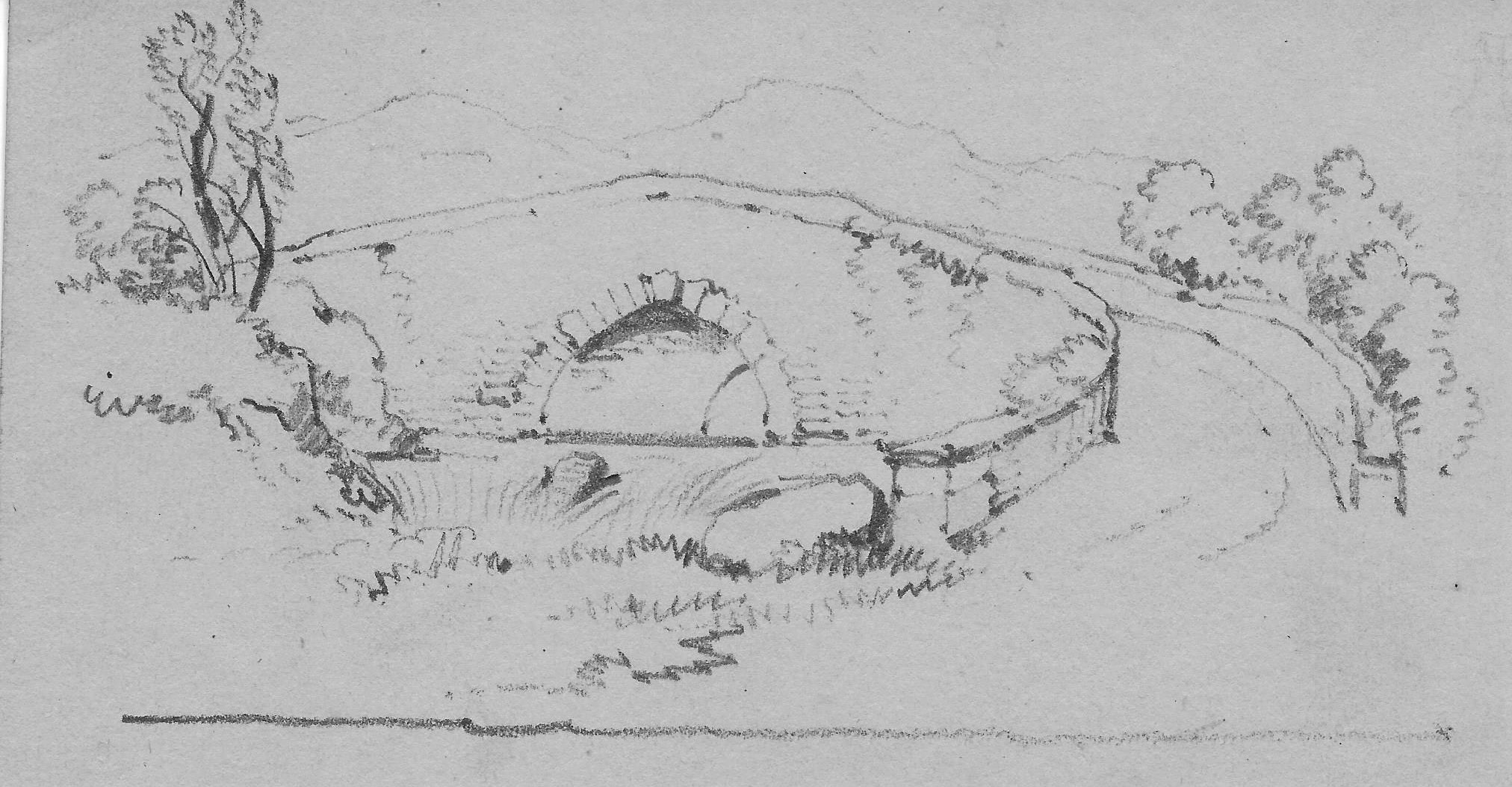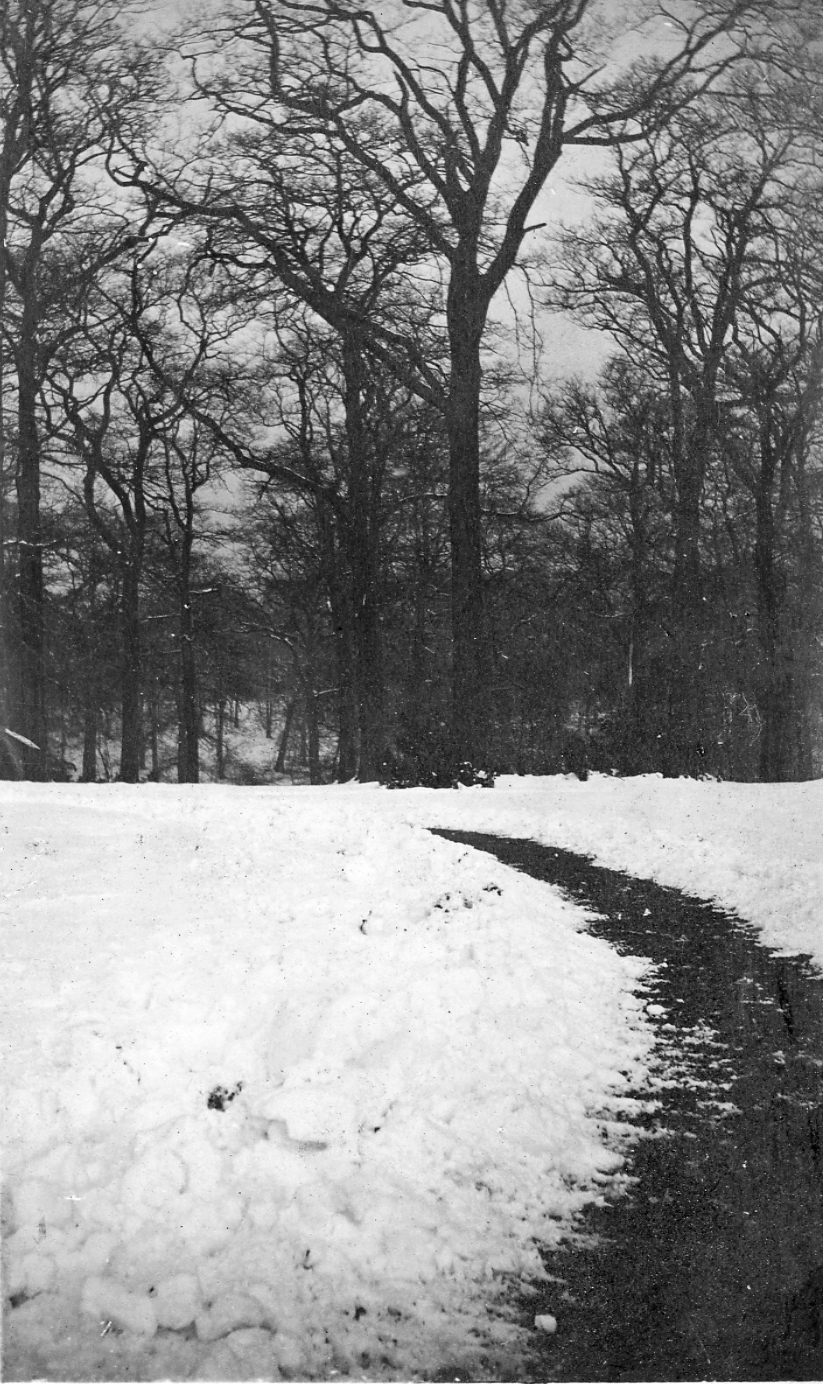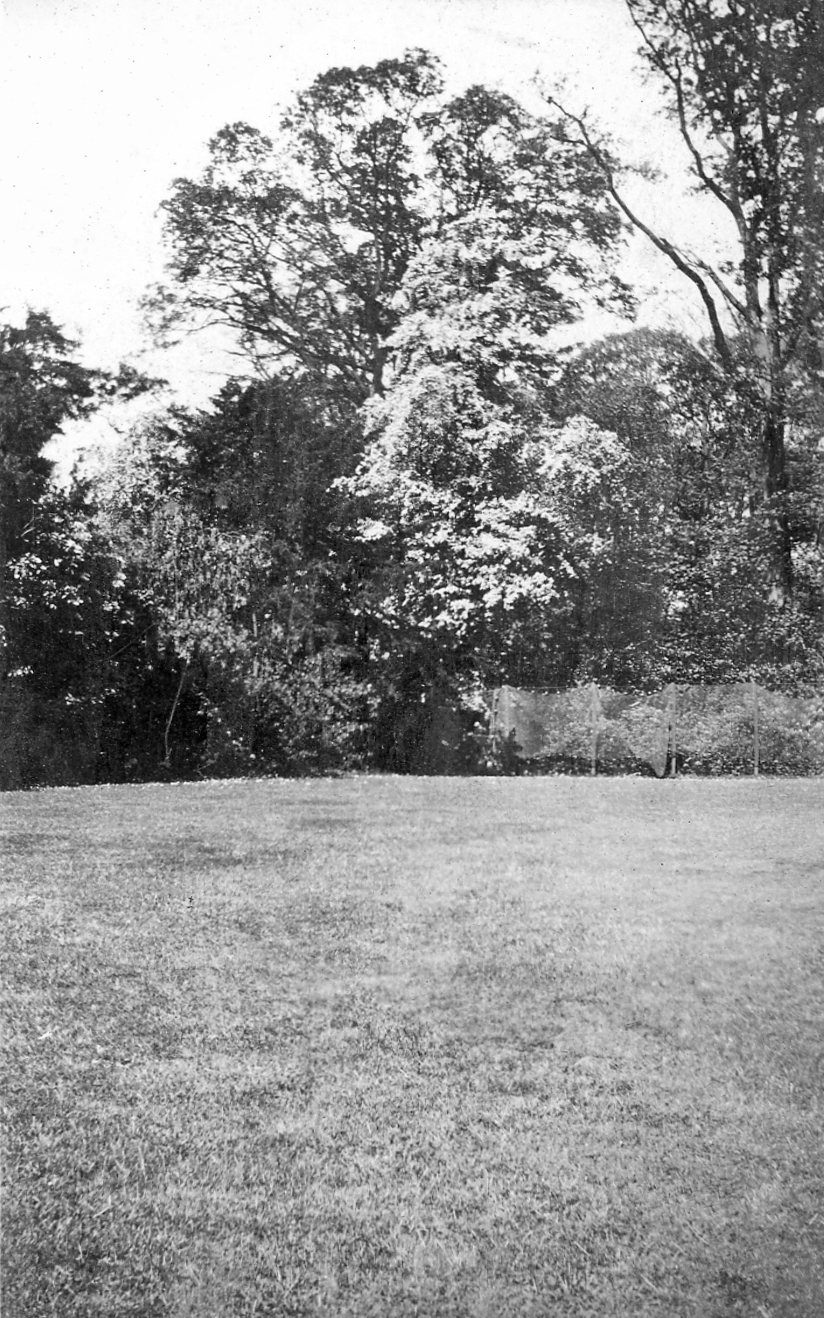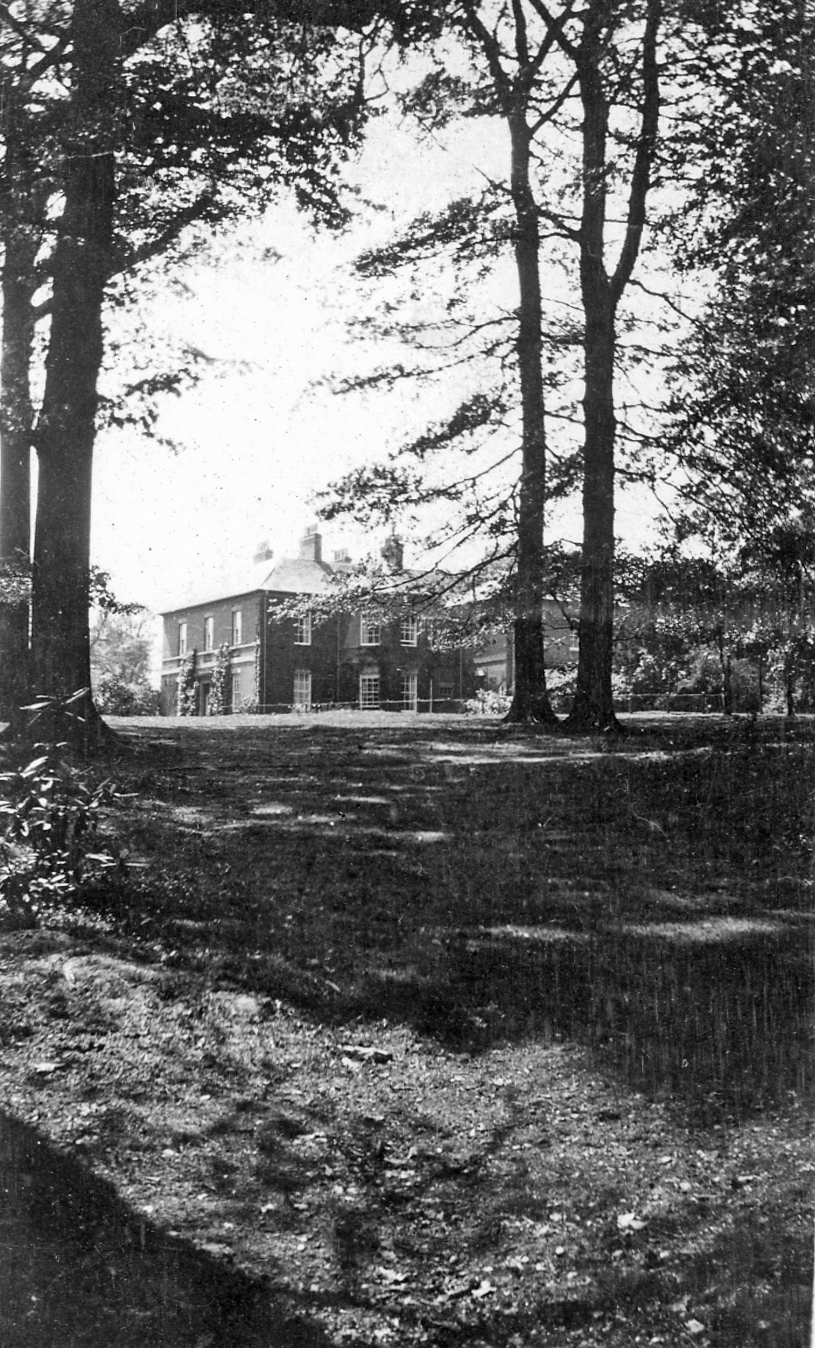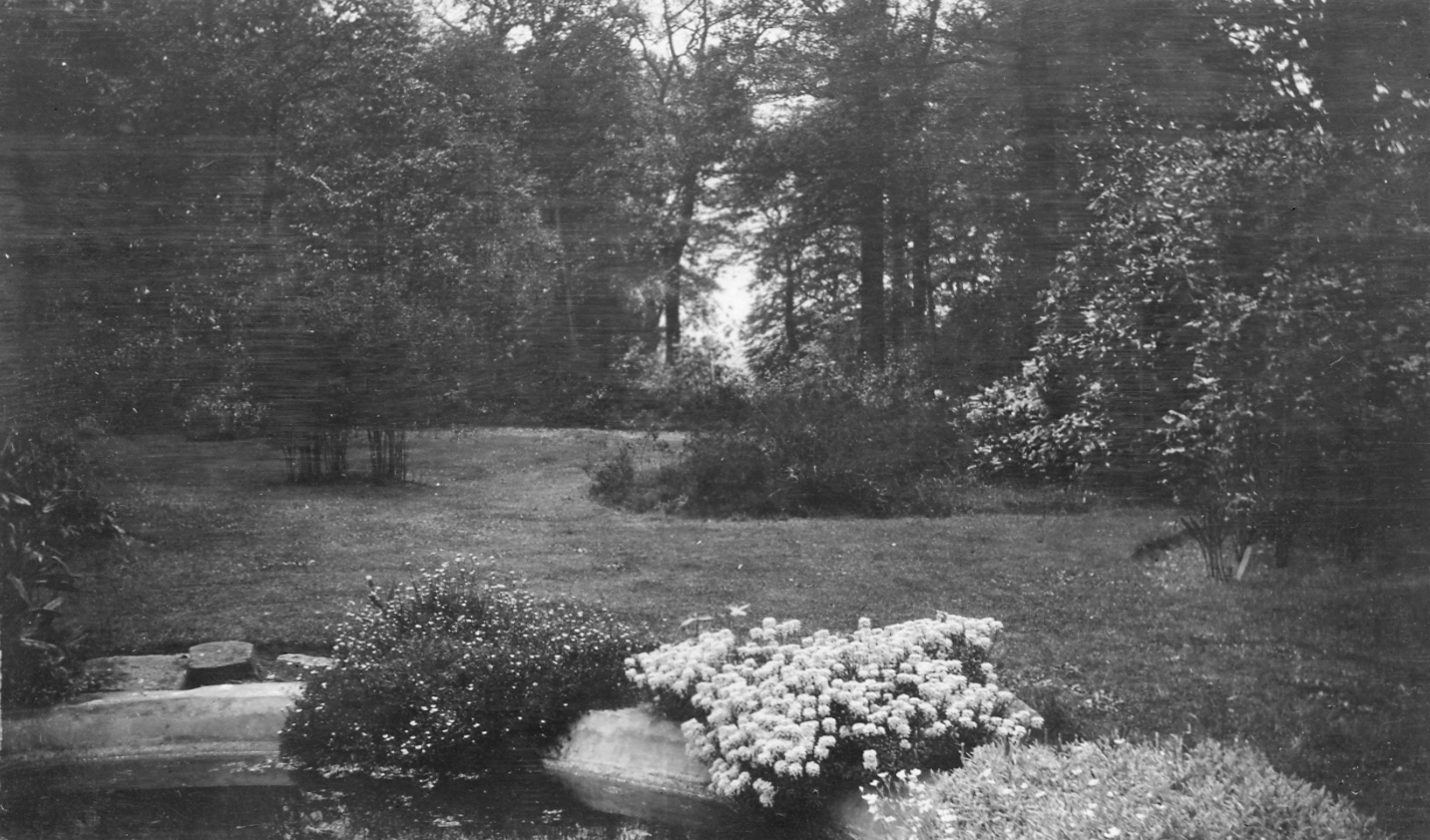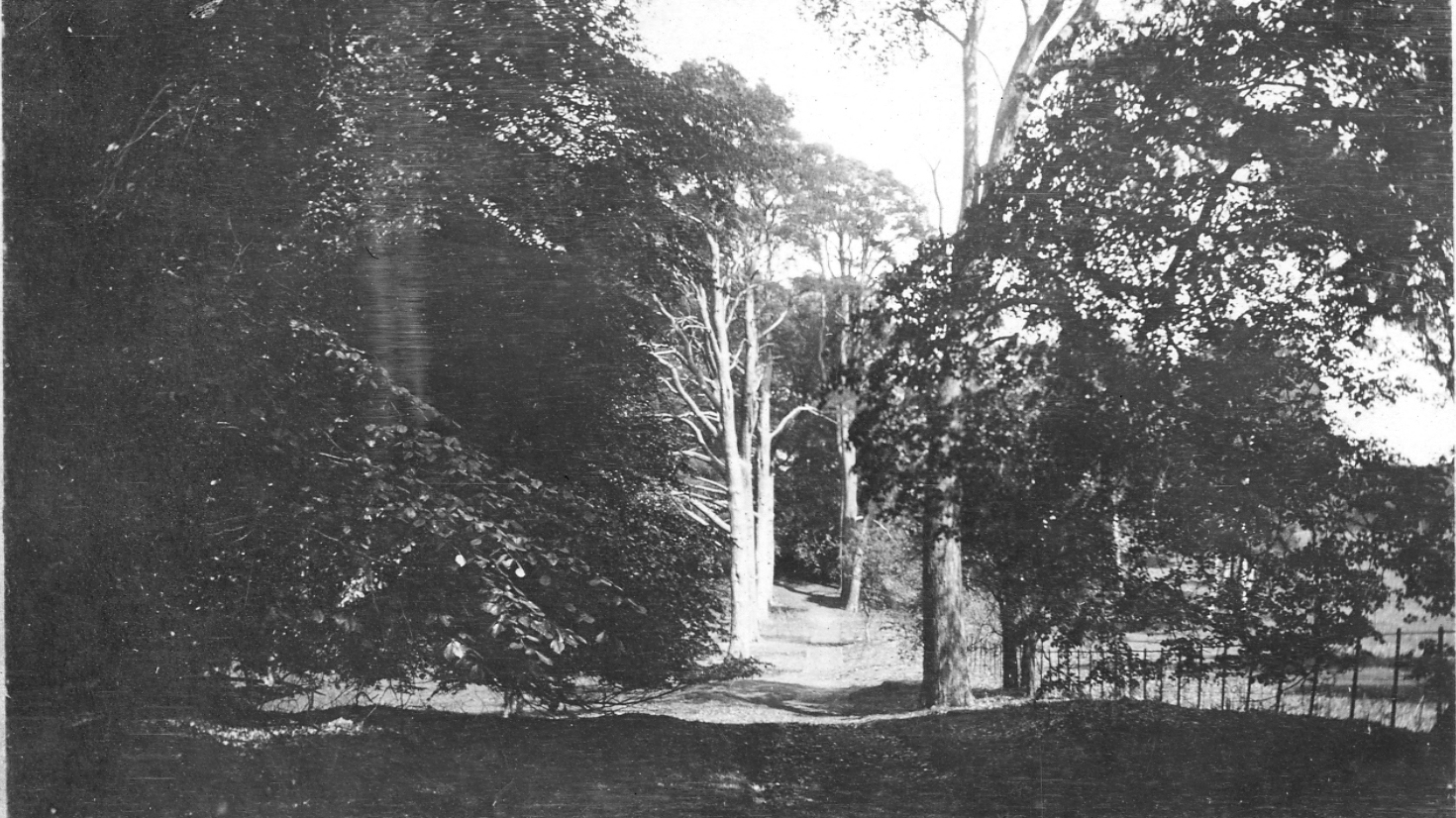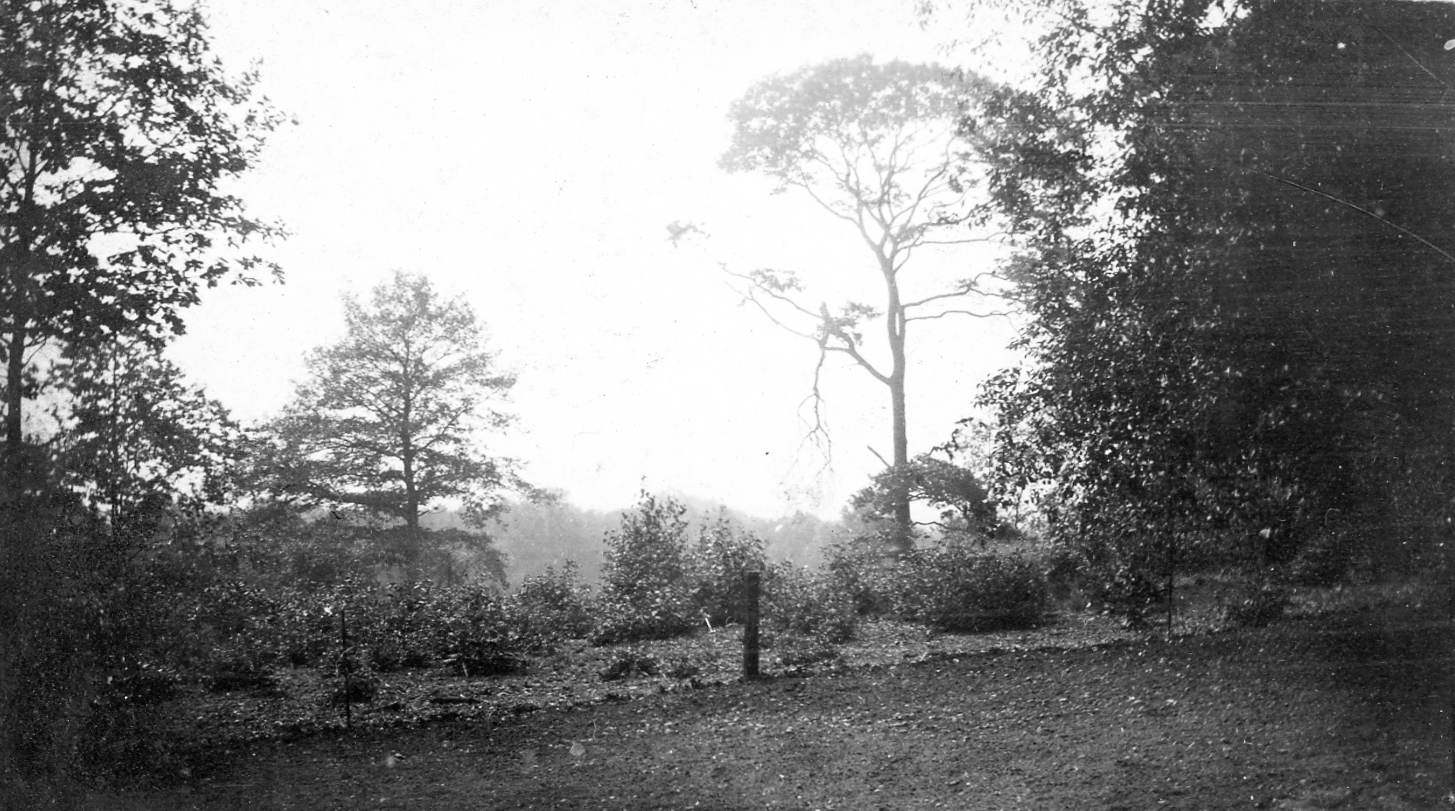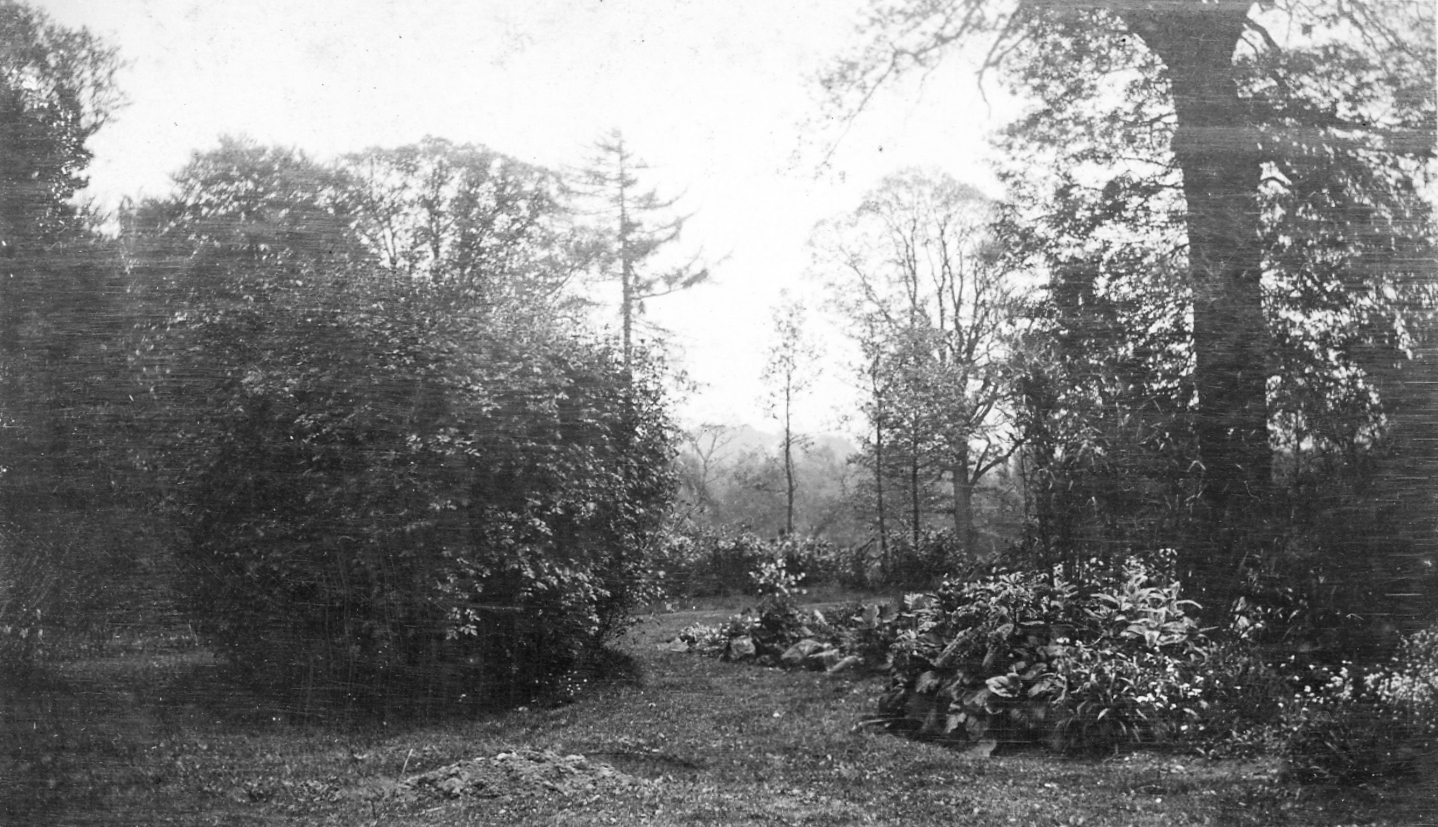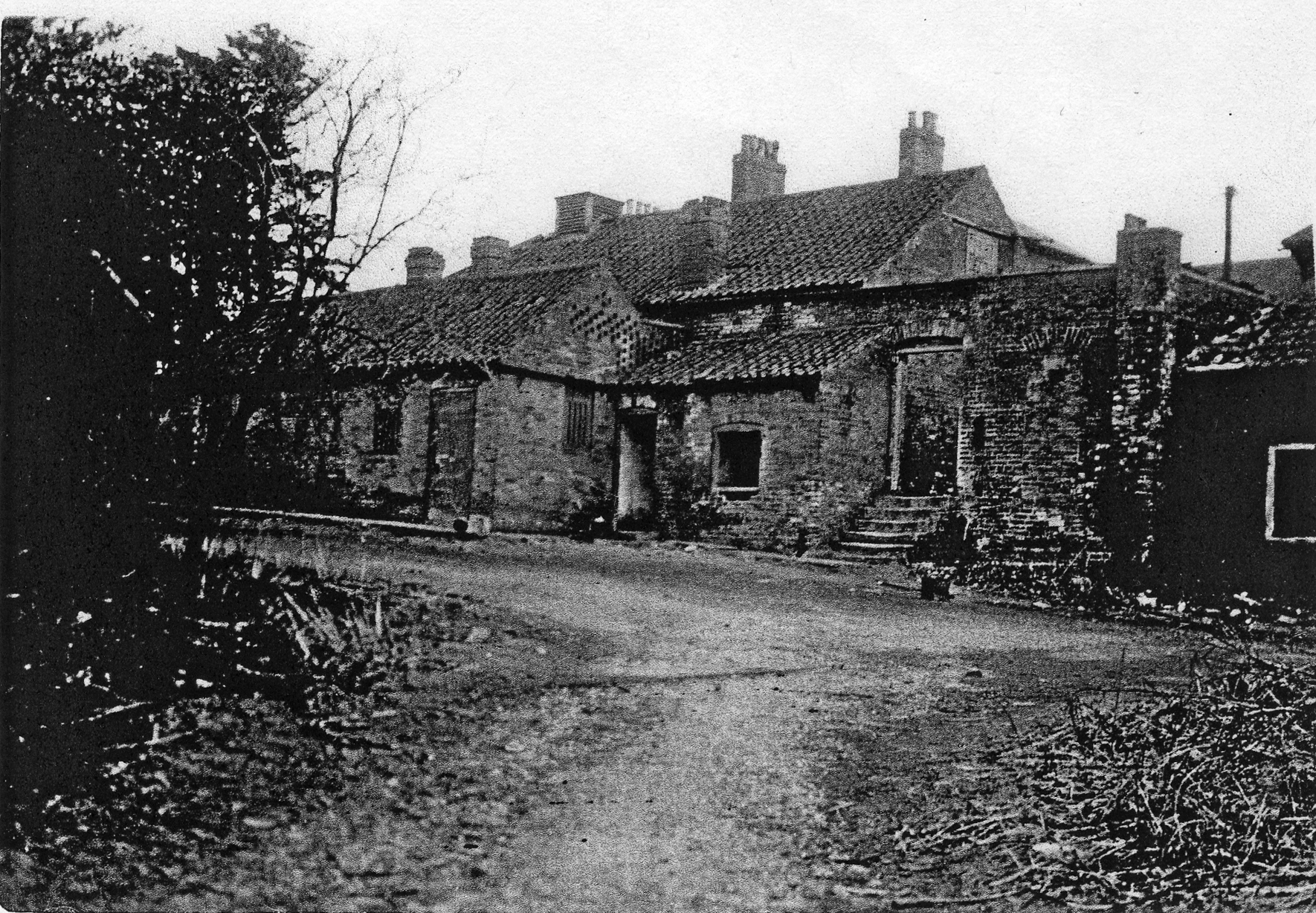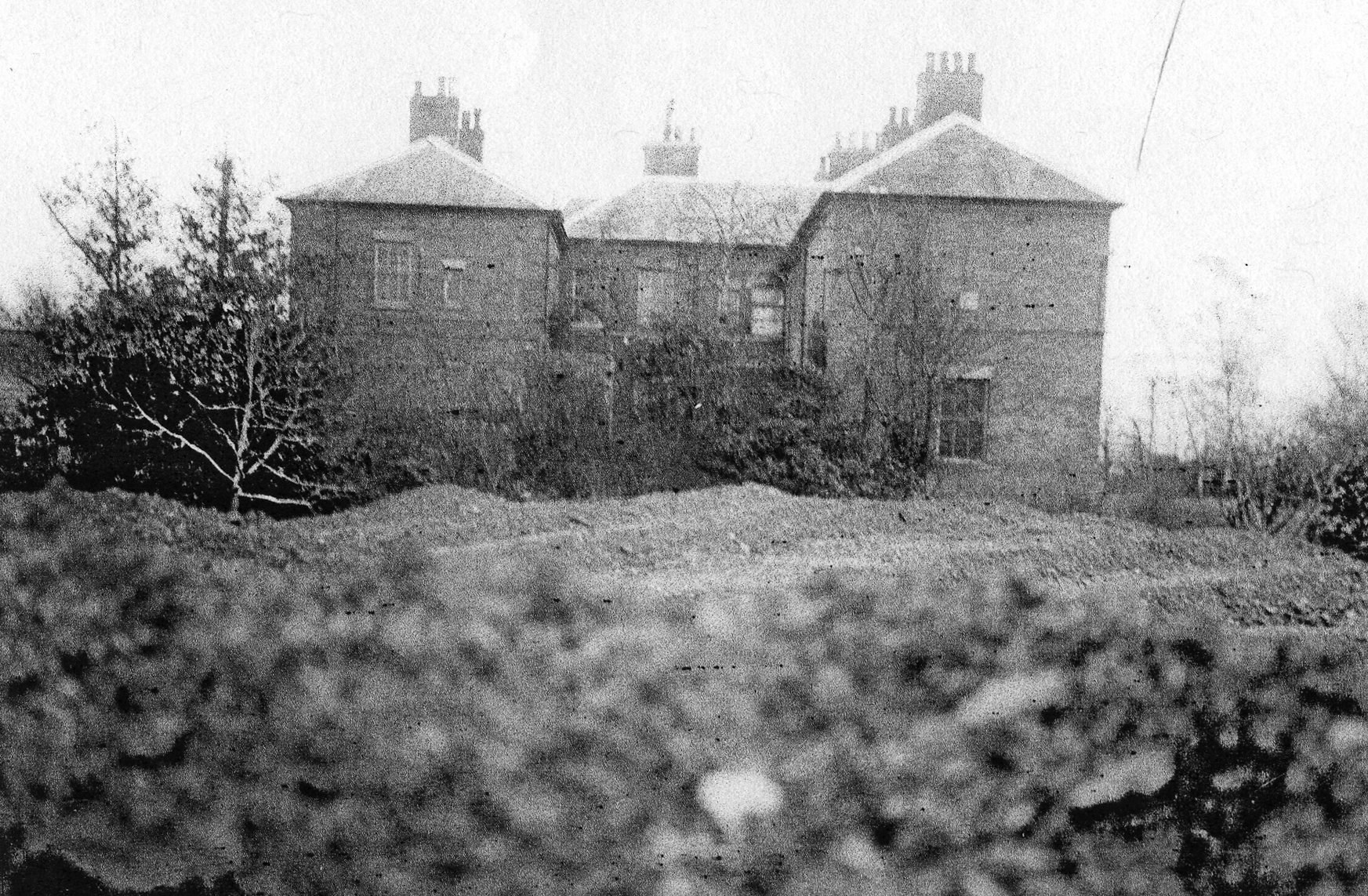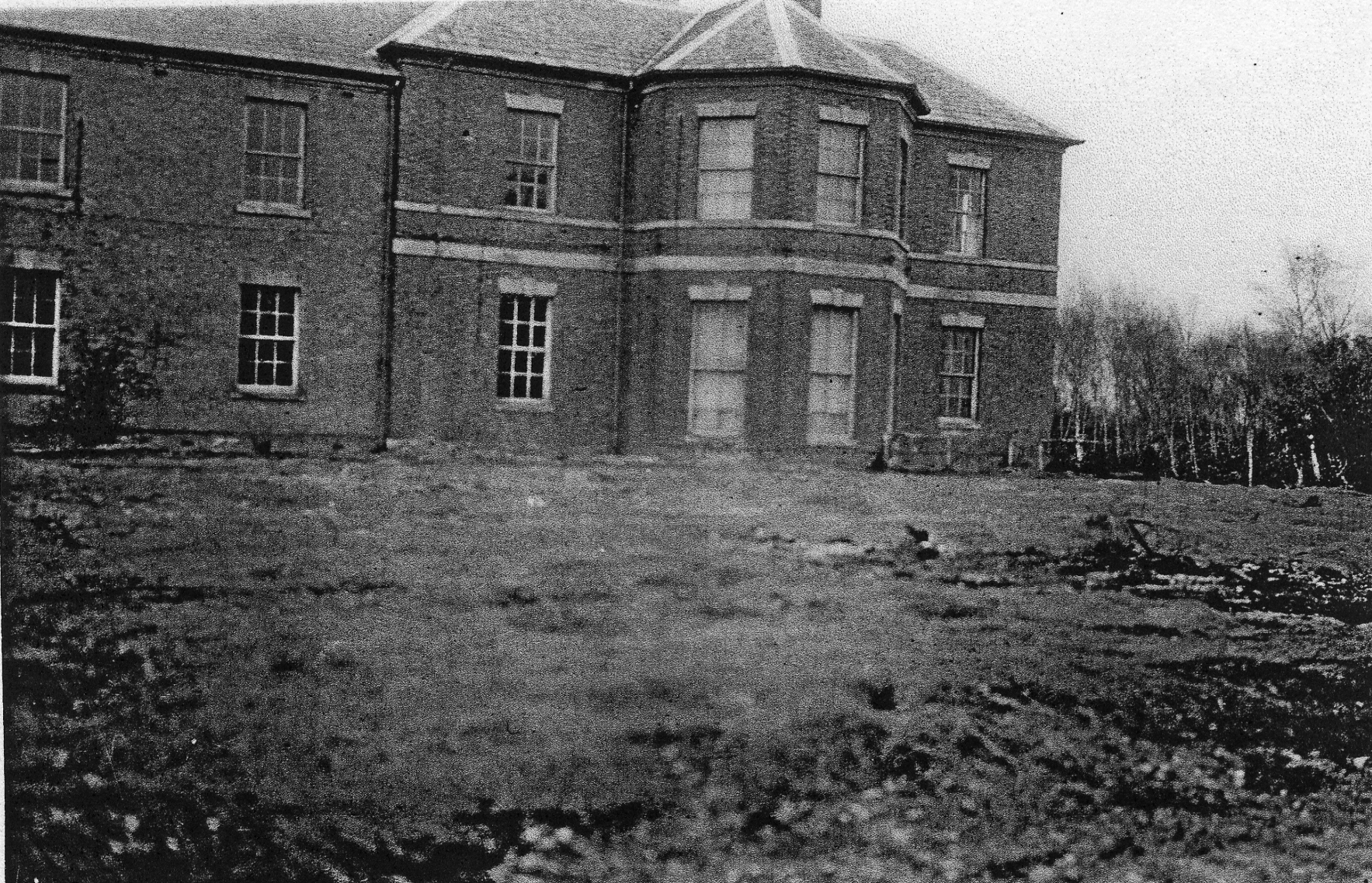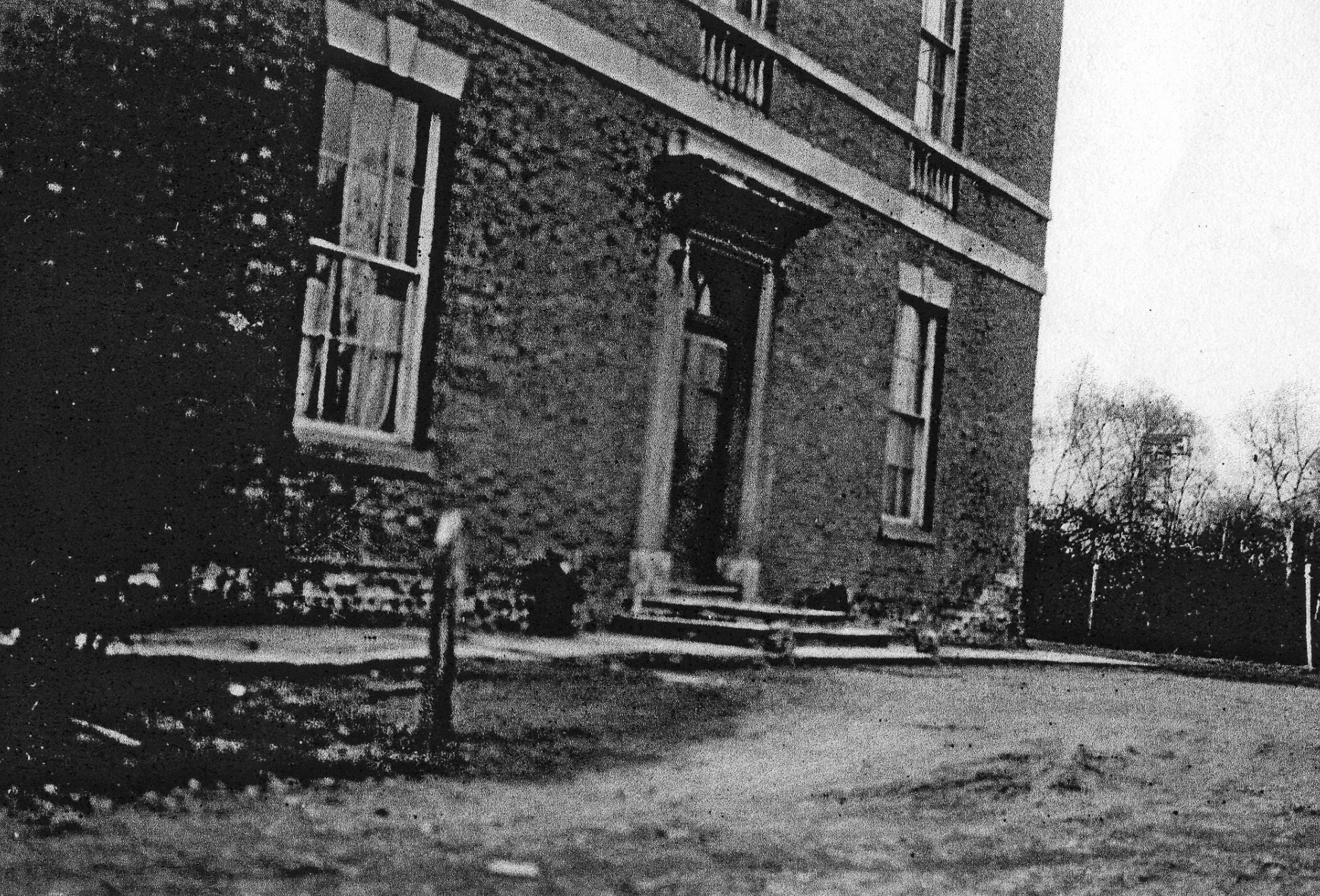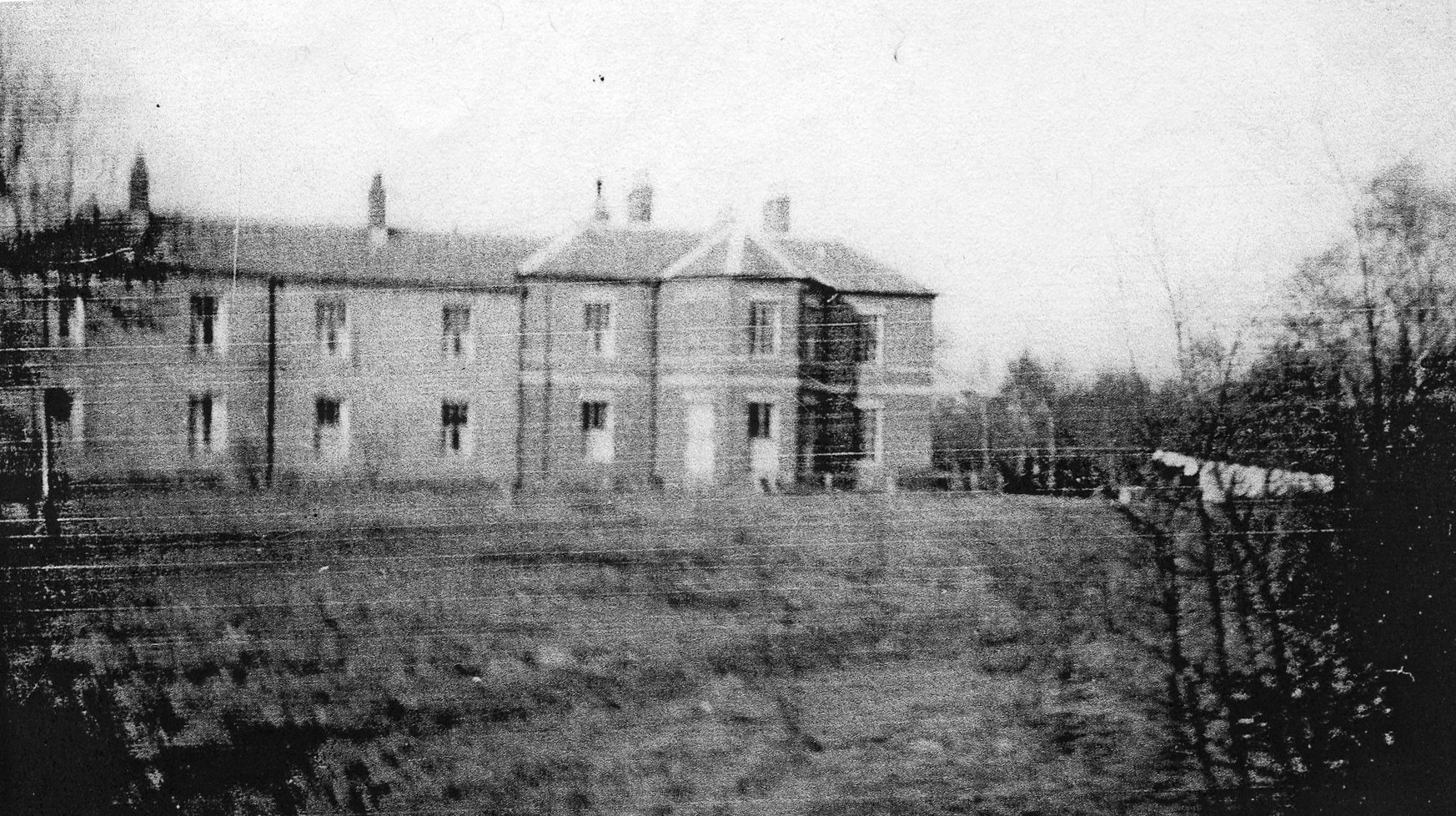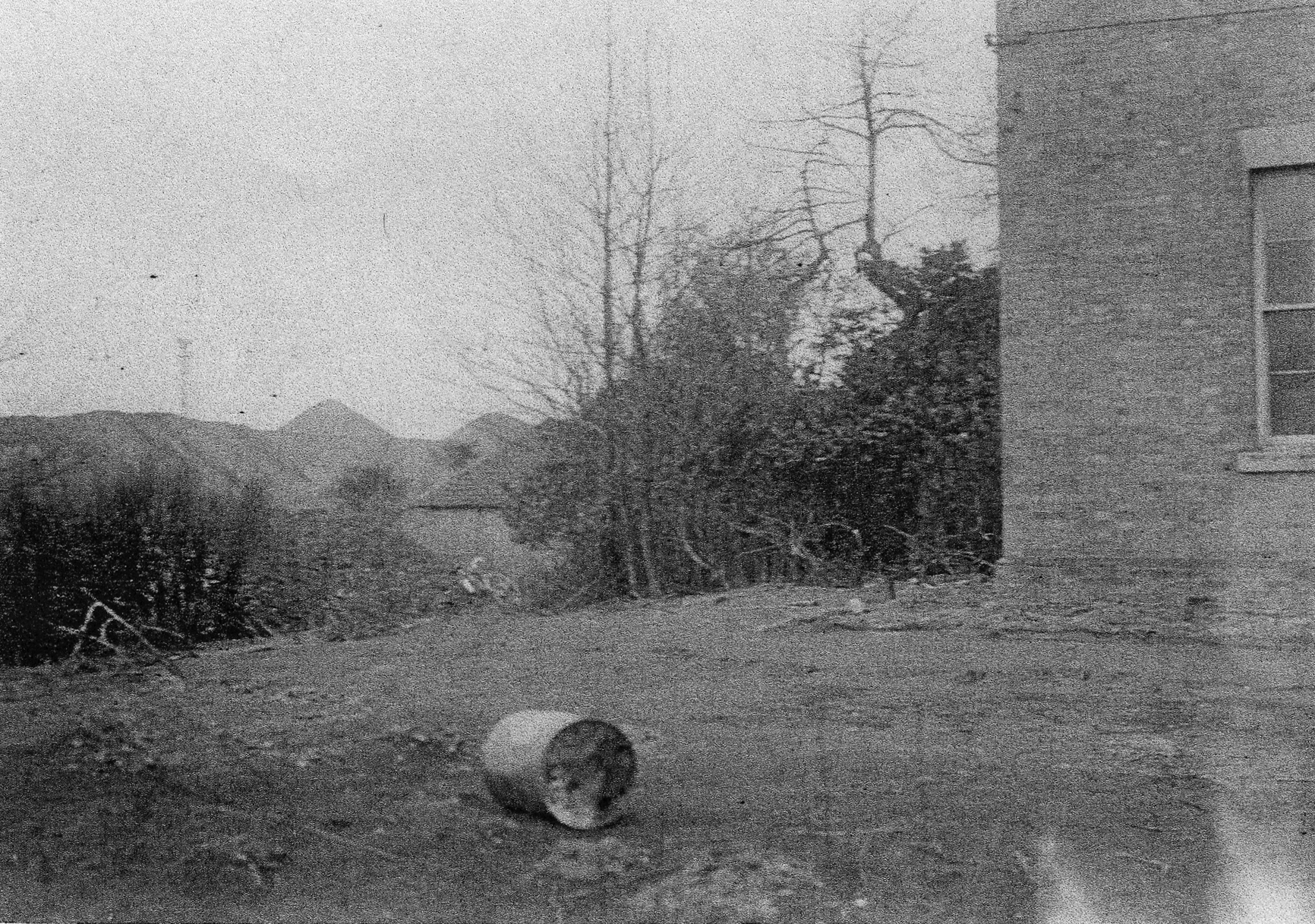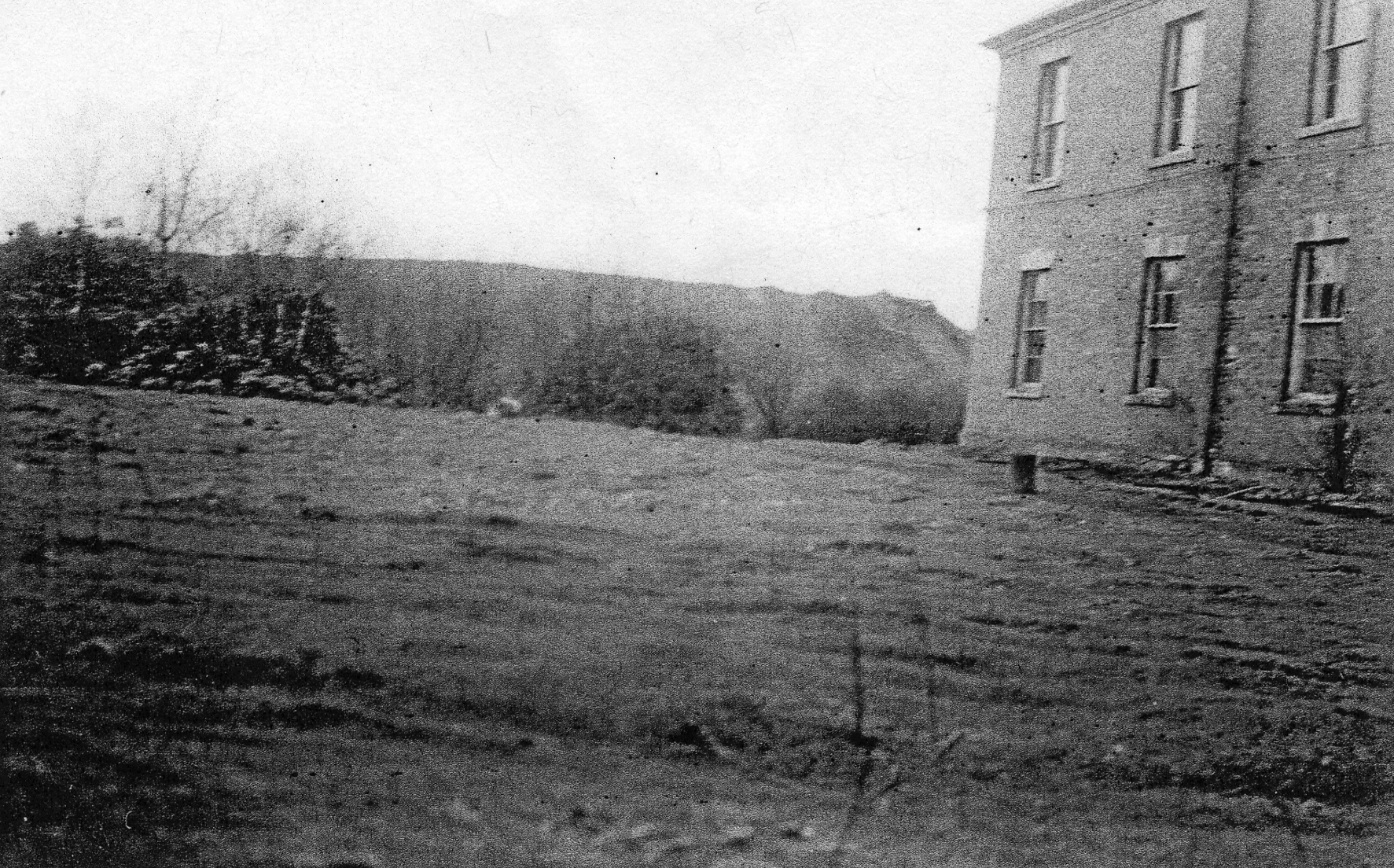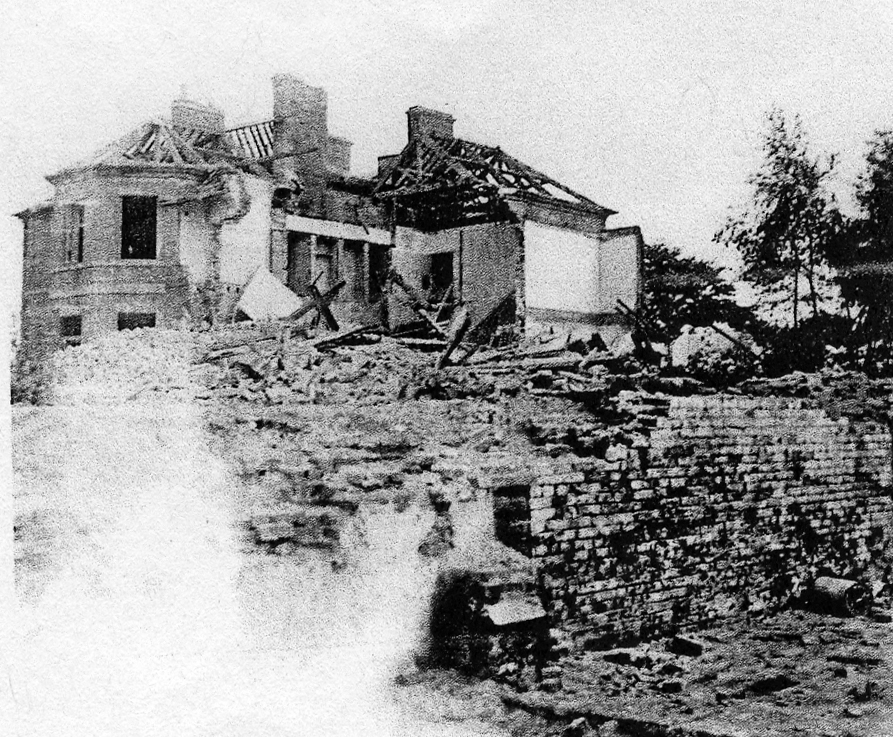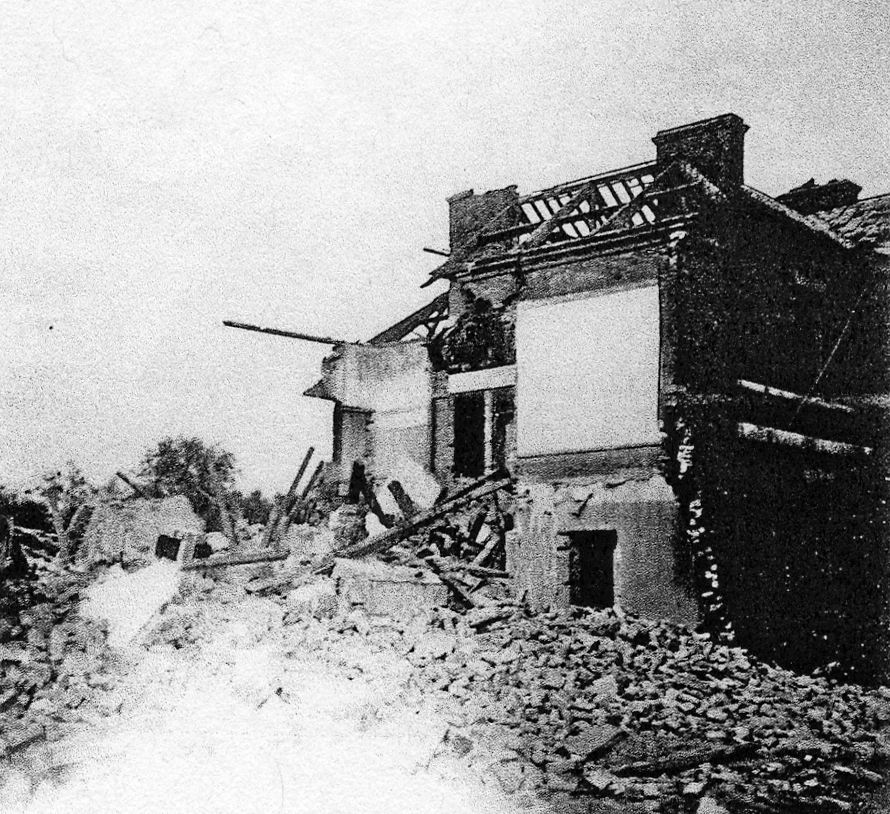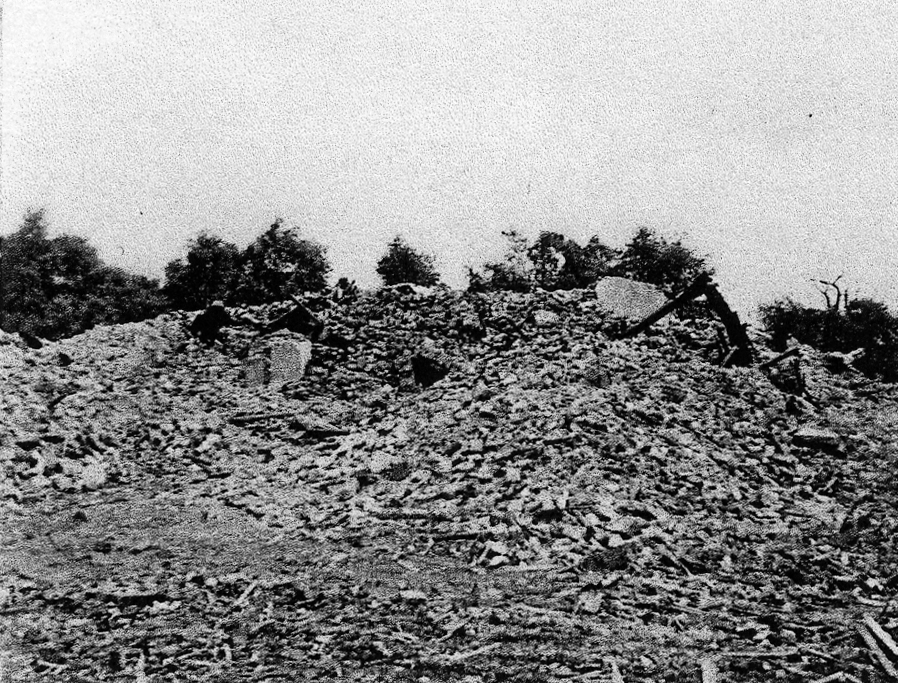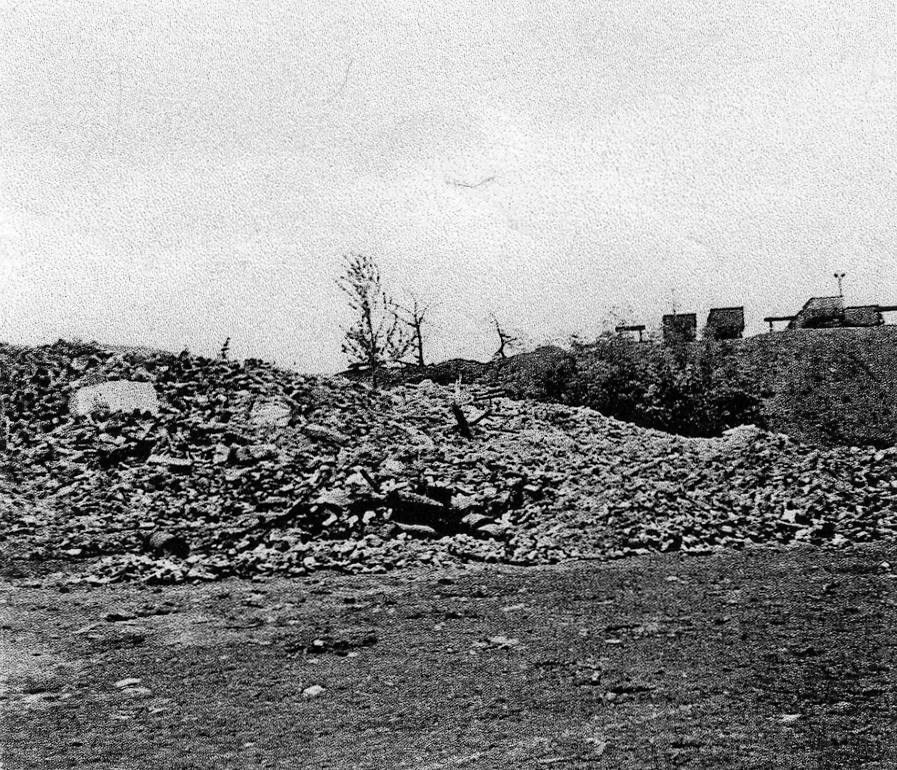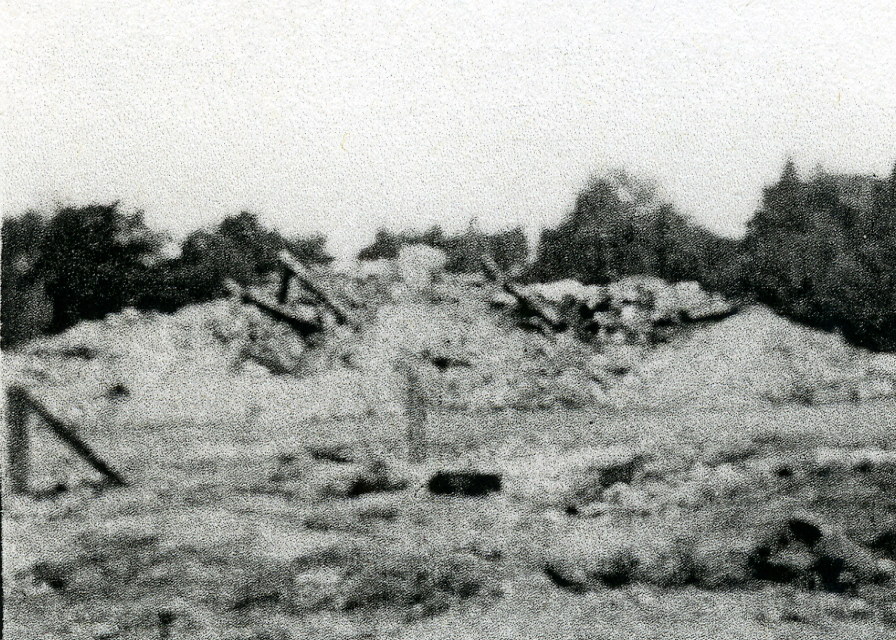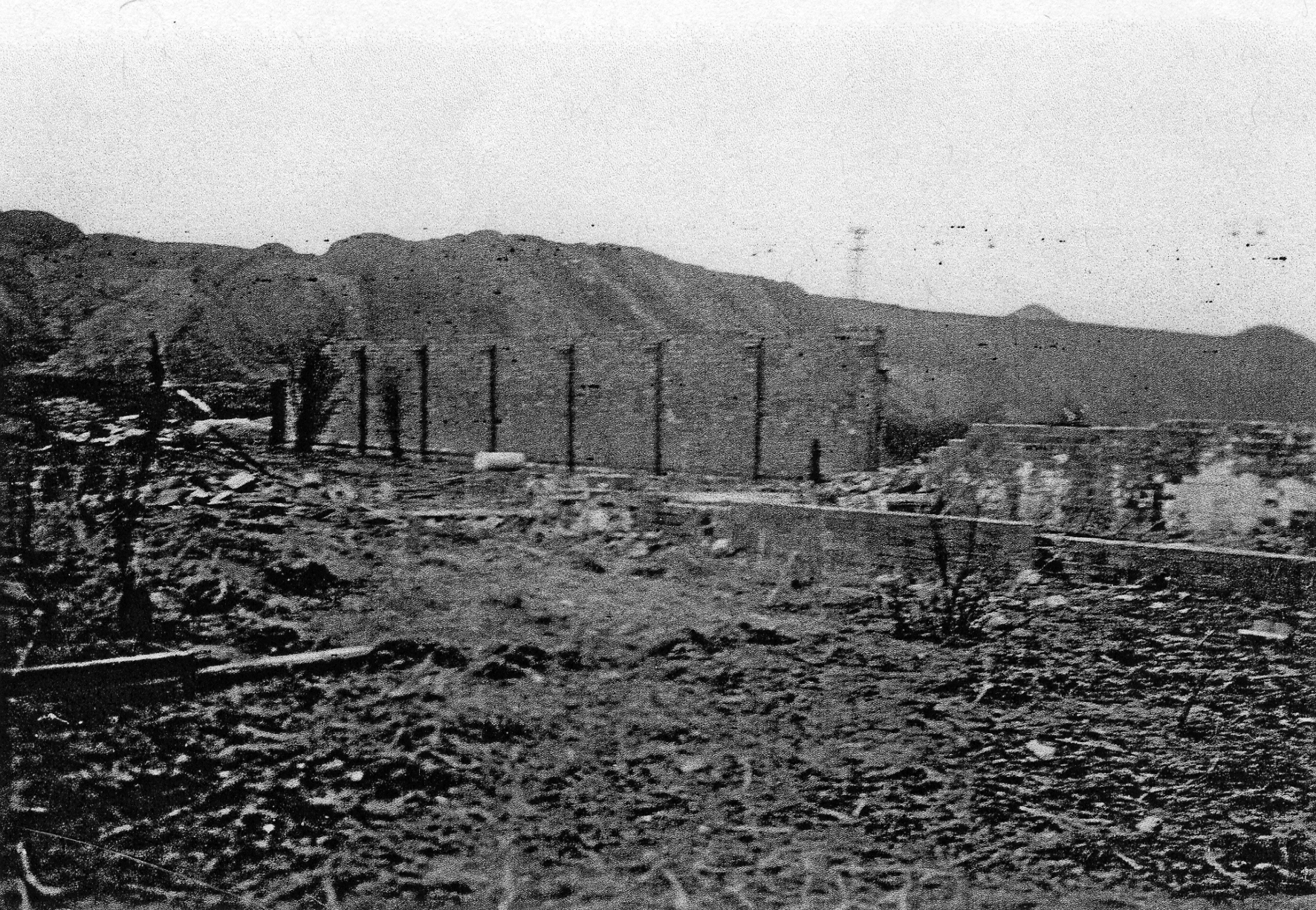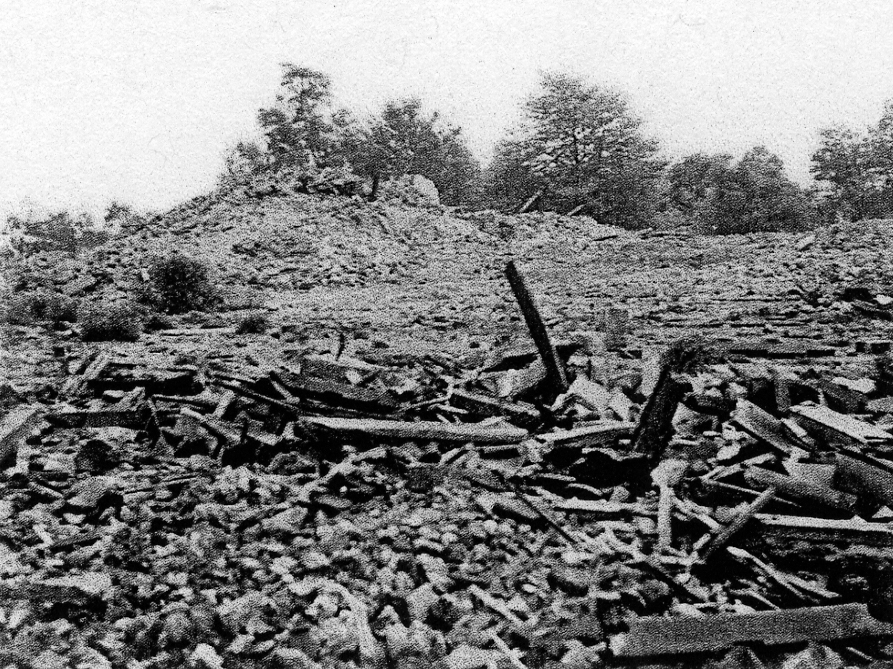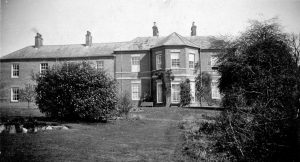
Cockglode House is one of Nottinghamshire’s “lost houses”. Until demolition in 1956 it was sited north of the Edwinstowe – Ollerton Road (A 6075). When Sherwood was a Royal Forest, it is said that the Ranger’s Lodge for the Hays of Birkland and Bilhaugh stood here, and in early times would have been in the occupation of an official of the Crown. By the 1700’s it was disused and described as “a tumble-down cottage”.
The publication “Parish Registers of Edwinstowe for 1634 – 1758” (edited by George W Marshall, L.L.D., F.S.A., and Appendix by Cecil G Saville Foljambe, Esq., M.P. F.S.A.) provides evidence of occupation in Cockglode, as indicated by the following records:
BAPTISMS
1665 28th May Thomas s John Officer & Mary Cockgload
1667 19th January Edward s Jo Officer &….. Cockgloude House
1674 17th January Joshua s Thomas….. Cockglode
BURIALS
1654 21st Dec. John Dutton father of a family Cockglode, Bilhay
1663 26th Sept Robert Duttonne Cockgloade
It is also worthy of note that the surname Officer or Offiser appears in the registers for Edwinstowe residents:
BAPTISED
1667 10th Nov. Roger s Roger Officer & Mary, Edwinstow
1670 18th June Marye d Roger Officer & Mary, Edwinstow
1672 8th June John s Rodger Officer, Edwinstow
1673 1st June Mary d Rodger Officer
BURIED
1671 18th Aug Mary Officer, Edwinstow
1672 12th June John Officer
1679 16th Feb Elizabeth Offiser
1682 14th June Rodgger Officer
When Charles Green died on 4th October, 1664 his abode was listed as “Cabbin in Birkland”. Is it possible that a similar description could have been applied to the dwelling in Cockglode at that time?
In the year 1818, the Crown wanted the Advowson of St Mary-le-Bone owned by the Duke of Portland, so an exchange was agreed for Bilhaugh and Birklands in 1828. This allowed the Duke of Portland to complete a secondary deal with Earl Manvers at Thoresby exchanging Holbeck for Birklands and Bilhaugh, including Cockglode. Thus, in 1833 Cockglode became part of the Thoresby estate.
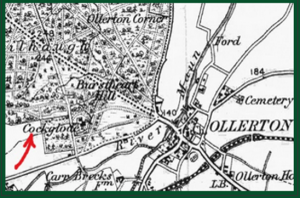
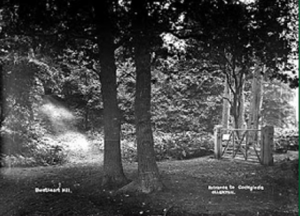
Early 20th century postcard showing ‘Burstheart Hill’ & ‘Entrance to Cockglode, Ollerton’.
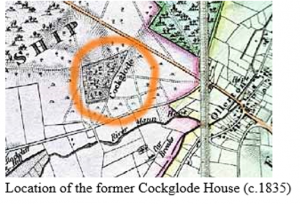 1724 – 1776
1724 – 1776
In 1724 (or thereabouts) the Rev. William Sterne (Rector at Averham) signed a counter-part lease with the Earl and Countess of Oxford, for a period of 41 years at £2.2.0 . p.a. to build a house at “Cuckload Spring (19ac. 1 r. 34 p) in Ollerton,” and was responsible for planting an impressive avenue of Scots Pines. William was ordained in 1697, and was Rector at Cockayne Hadley between 1700 and 1711, Rector at Averham from 1711 until 1733, then at West Dene from 1733 until his death in 1754. The Rev Sterne’s ancestry included Richard Sterne, Archbishop of York from 1664 – 1683 (who was born in Mansfield), and Laurence Sterne (1713-1768) novelist and clergyman, whose notable works included “The Life and Opinion of Tristram Shandy, Gentleman”.
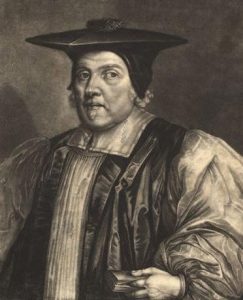
Richard Sterne, Archbishop of York – Wikipedia
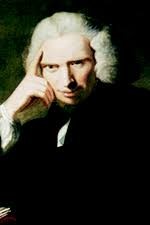
Laurence Sterne – Wikipedia
The following information was printed in The Yorkshire Archaeological and Topographical Journal vol. 1.1870 and reproduced by kind agreement with the Yorkshire Archaeological Society.
“(164). 13. Mrs Mary Sterne, (widow), bur. March 29th, 1714. Mary, widow of Richard Sterne, esq of York (see No. 152), and daughter of Joseph Loveland, canon of York and Norwich. By will dated 17th June, 1719 (Pro. 29th April, 1724), she bequeaths my Lord archbishop/sterne’s picture and his Lady’s to her late husband’s nephew, the Rev. William Sterne of Averham, co. Notts.”
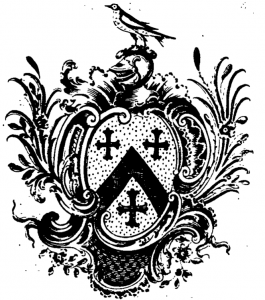
Sterne Coat of Arms
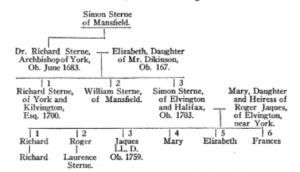
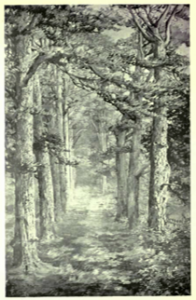
Avenue of Scotch Firs, Ollerton
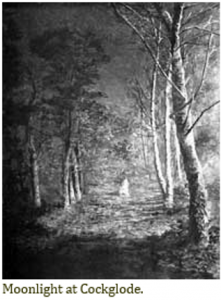
The following is an extract from Nottinghamshire History “the Scenery of Sherwood Forest” by Joseph Rodgers (1908)
ONE can imagine this house, standing alone in a grove of old forest trees, to have been erected from the same love of nature that inspired Sir Thomas Wortley to build the Lodge at the summit of the Crags on Wharncliffe Chase “for his plesor to here the hartes bel.” Its name speaks of the winged creatures of the wood.
The most remarkable feature within these grounds is the avenue of Scotch Firs near the Ollerton entrance. The fir is always a stately tree and being planted here in formal lines has a grand and majestic look. Unfortunately, it does not attain to any great age, for the roots scarcely penetrate into the sandy soil, and the rich loam of the surface is very thin. From this cause the avenue has lost some of its finest trees. On counting the rings of one which died in 1877, it was found to be 150 years old.
It is pleasant on a summer’s day to rest at the foot of one of these tall firs, for in this secluded garden of the forest, the commonest sounds of nature, even the droning hum of the bee, or the chirp of the grasshopper, are full of poetic feeling. Sometimes, during the deepening twilight of the spring, the nightingale makes the wood re-echo with its sweet melancholy strains. In early summer the cuckoo haunts these firs all day; its notes varied by the song of the thrush or the blackbird, the quick tapping of the nuthatch, or the wild cry of the woodpecker. Perhaps a slight stir is heard among the trees overhead, and a squirrel descends to the ground from his nest; he suddenly stops, and, with head poised on one side, fixes his bright eye upon the intruder, but seeing no hostile movement, proceeds very leisurely on his way. This morning there might be noticed under the garden paling, looking quite dazed in the sunlight, a young owl that has evidently wandered from its nest; whilst the loud note of warning is often sounded by the rustic youth near the hen-coops, to scare away sly Reynard.
1776 – 1797
In 1776 Dr George Aldrich , who was searching for a house in the area, was attracted to Cockglode and requested help from the Duke of Portland and the Duchess of Kingston to get a lease of Cockglode. He was credited as having built the elegant residence.
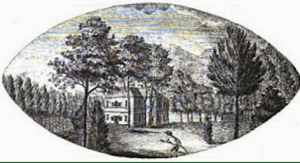
Cockglode House as sketched by John Throsby, c.1790
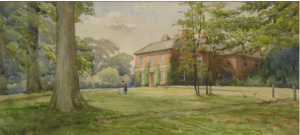
Courtesy of Sherwood Forest Trust
Burial records in Ollerton Church record that his first wife, Anne Bland, died on 19th January, 1785. Subsequently he married Sibylla Benson in 1788. Burial records in Ollerton church record the death of Dr Aldrich on 22nd July, 1797. He left an annuity of £12.10s to enable a service to be held every Sunday in Ollerton Chu rch.

Copy of burial register in Ollerton Church.
In November 2019 BBC 4 televised a programme relating to a portrait of George Aldrich, painted by an Italian artist (Pompeo Batoni), which posed a mystery as to why such a highly regarded artist painted a Nottinghamshire physician.
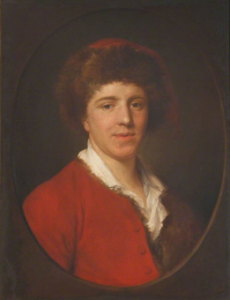 Wikimedia
Wikimedia
1797 – 1837
The next occupier of the house was Sir Robert Shore Milnes, Bart., who served in early life in the Royal Horse Guards Blue, had been Governor of Martinique, and Lieutenant Governor of Lower Canada from 1799 to 1805. In 1785, he married Charlotte Frances Bentinck, great granddaughter of William Bentinck, 1st Earl of Portland, which may have been the reason for choosing to live at Cockglode. He was created a Baronet in 1801, and died at Tunbridge Wells in December, 1837. His wife died at Tunbridge in 1850.
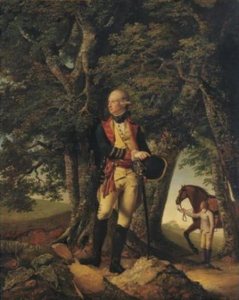
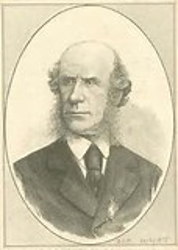
Portrait of Sir Robert painted by Joseph Wright of Derby. Wikipedia
1837 – 1869
The next tenant of Cockglode was Colonel the Hon. Savile Henry Lumley who married, in 1806, Mary Henrietta Tahourdin, born in 1778. He died in 1846, and was buried at Edwinstowe. His widow remained tenant of Cockglode until her death in July, 1869. Both are buried in a vault in St Mary’s Church, Edwinstowe. The 1841 census records show that there were 3 servants and a gardener employed at the house. According to the 1851 census the household employed a housekeeper, cook, housemaid, kitchen maid, coachman and a footman. In 1844 the house was enlarged.
1869 – 1897
Cecil George Savile Foljambe became the next tenant. In 1869 he married Louisa Blanche Howard who died in 1871. They had 2 children. A window in the south wall of the chancel in St Mary’s church commemorates his wife Louisa. In 1877 he married his wife’s cousin, Susan Cavendish, eldest daughter of William Henry Frederick Cavendish. She died in 1917. They had 11 children. A Nottinghamshire M.P from 1880 – 1892, he was raised to the peerage in 1893 as Baron Hawksbury of Haselbech, then became Earl Liverpool in 1906. Having lived at Cockglode for twenty-eight years he left for his Yorkshire home, Kirkham Abbey, in 1897, where he died in 1907. At the time of the 1871 census staff included a butler, housekeeper, kitchen maid, and housemaid. The census for 1881 included a butler, housekeeper cook, nurse, lady’s maid, footman, groom helper, housemaid, kitchen maid, nursery maid, and house maid.
* A snap-shot of life in the 1800s at the end of the document
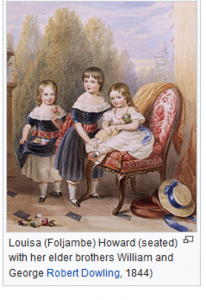 Wikipedia
Wikipedia
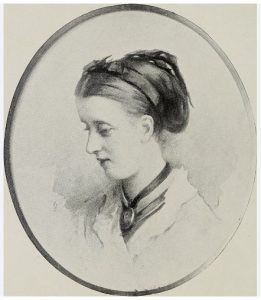
Louisa Blanche – Acknowledgement Wikidata
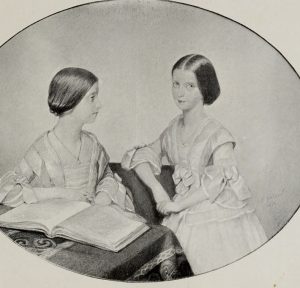
Louisa and Margaret – Acknowledgement Wikidata
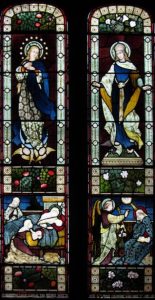 The stained glass in the south window of the chancel, in St. Mary’s Church, to the memory of Mrs. Cecil Foljambe, the first wife, Louisa, of Mr. Cecil Foljambe, of Cockglode, is a pleasant piece of colour, and a fine specimen of modern work. It was painted by Cecil in 1873. Louisa died 1871.
The stained glass in the south window of the chancel, in St. Mary’s Church, to the memory of Mrs. Cecil Foljambe, the first wife, Louisa, of Mr. Cecil Foljambe, of Cockglode, is a pleasant piece of colour, and a fine specimen of modern work. It was painted by Cecil in 1873. Louisa died 1871.
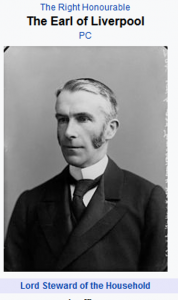
Acknowledgement – Wikipedia

Cockglode house c.1910
1897 – 1912
In 1898 George Savile Foljambe left Brackenhurst, near Southwell, and leased Cockglode for himself, his wife Dora and their 5 children. Cecil Foljambe, the previous occupant of the house, was George’s uncle. (Cecil was the Squire Francis Foljambe’s half-brother). A book published by a relative of the family (Jackson, J. 2010 Family at War, the Foljambe family and the Great War. Haynes Publishing, California)) includes a letter written by George’s younger son, Francis Foljambe, in which he wrote that Cockglode was “about as isolated and remote as any place in the whole country”, but it seemed to suit the young sons who spent their time at Cockglode riding with the Rufford hunt, shooting jackdaws and ferreting.
Records mention expenditure on Cockglode between 1898 and 1911 amounted to £1,684.18.9.
1912 – 1940
In 1912, Eva Henrietta Hutton (twice widowed – first husband Captain Hon Cornwallis Maude; second husband Colonel George Holden Hutton) came to live in Cockglode with her daughter, Lady Eveline Maude. She had agreed with Earl Manvers, an annual rent of £200, from Lady Day 1912 to 1914, which included the fishing rights on the river Maun. At this time the insurance premium for the house and outbuildings cost £1.10.0. Both Mrs Hutton and Lady Eveline took an active interest in the local community.
Sketches and paintings from the portfolio of Lady E. Maude dated 1906.
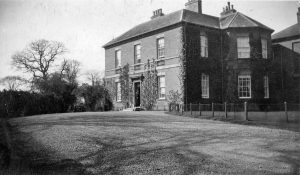
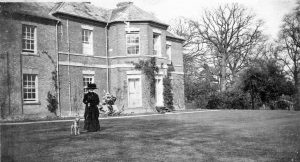
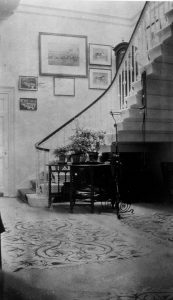
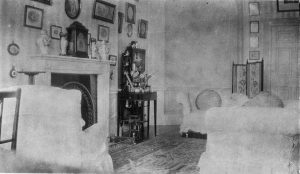
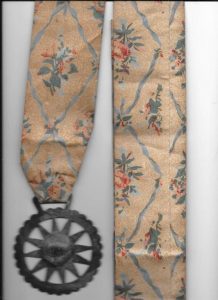
The Bell Pull from the house.
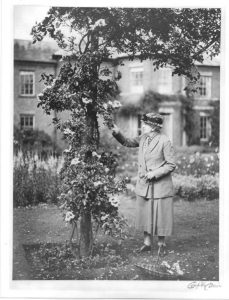
Mrs Hutton on the lawn, Cockglode House
When Mrs Hutton died in 1940, Lady Eveline left Cockglode to live at “The Kennels” at Thoresby. There is a belief that Lady Maud Hoare lived at Cockglode, which is not the case. The confusion appears to be the Christian name Maud (Lady Hoare) and surname Maude (Lady Eveline).
1940 – 1956
Cockglode became difficult to let as a large house, so it was converted into eight flats: two each side of a central front door, the other four accessed by the one staircase. Each flat typically comprised two bedrooms, a sitting room, a kitchen, and pantry. The bathroom was shared. The rent was collected by Miss Freeman who came over from an office on Fourth Avenue, Edwinstowe. (The office was sited where currently stands P G Lock, the butchers, and incorporates the date 1933 in its brickwork).
Thoresby Colliery was opened in 1928, and sited adjacent to Cockglode. As the colliery expanded to mine deeper coal seams more land was required for tipping the waste spoil, so the NCB bought Cockglode and its immediate grounds. The sale price for the plot of 18- and three-quarter acres, was £3,500 and included the house and the roadway.
1956
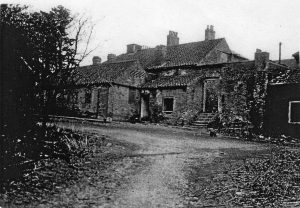
Cockglode was demolished and disappeared under the colliery tip.
1958 – 2019
To mark the millennium, local Rotarians planted trees to cover the restored colliery tip, and the area has been named “Cockglode Wood.”
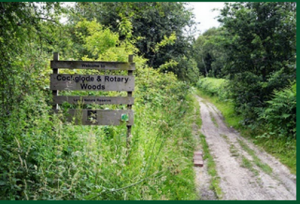
Entrance to and view from “Cockglode and Rotary Woods”
Much of the habitat management work is done on a voluntary basis by the Friends of Sherwood Heath in conjunction with the Sherwood Forest Community Rangers.
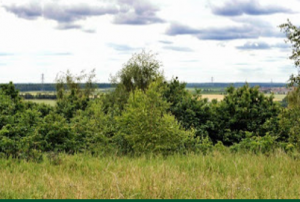
Acknowledgements to: Ian Gordon Craig (Thoresby blogspot), Nottinghamshire History, The Thoroton Society of Nottinghamshire, and Sherwood Forest Trust. Also, Stonebridge Trust Pierrrepont Archives, for dates regarding lease of the property.
*COCKGLODE HOUSE – Census 1841
| NAME | STATUS | AGE | OCCUPATION | BIRTH PLACE |
| Susan Watkinson | F | 30 | servant | Notts |
| Ann Parker | F | 20 | Servant | Notts |
| Mary Ridley | F | 20 | Servant | Notts |
| William | M | 45 | Gardener | Notts |
Cockglode House – Census 1851
| NAME | STATUS | AGE | OCCUPATION | BIRTH PLACE |
| Maria Lowe | U F | 38 | Servant Housekeeper | Edwinstowe |
| Susannah Wadkins | U F | 40 | Servant Cook | Ollerton |
| Dorothea Toor | U F | 19 | Housemaid | Budby |
| Sarah Beverly | U F | 20 | Kitchen maid | Mansfield Woodhouse |
| John Maltby | U M | 29 | Coachman | Southwell |
| William Newton | U M | 13 | Footman | Edwinstowe |
Cockglode House – Census 1871
| NAME | STATUS | AGE | OCCUPATION | BIRTH PLACE |
| Henry Wells | M | 57 | Butler | Rufford |
| Sarah Smith | U | 29 | Housekeeper | Grantham |
| Harriet Southall | U | 19 | Kitchen maid | Cresswell |
| Fanny Cutts | U | 20 | Housemaid | Wellow |
| Cecil G S Foljambe | M | 34 | Head of House. Retired Ltnt RN, M.P., J.P. | Worksop |
| Susan Louisa | W | 32 | Caldicot, Herts | |
| Arthur Wde BS | S | 10 | Scholar | Eastbourne |
| Gerald W F S | S | 2 | St Martins in the Fields, London | |
| Edith M E M | D | 1 | London |
Cockglode House – Census 1881
| NAME | STATUS | AGE | OCCUPATION | BIRTH PLACE |
| Alice E G M Foljambe | 6 months | Edwinstowe | ||
| William Foxhall | U | 29 | Butler | London |
| Emma Lay | 43 | Housekeeper Cook | Berks | |
| Margaret Tosh | W | 35 | Nurse | Scotland |
| Lydia Green | M | 26 | Lady’s maid | Devon |
| William Taylor | U | 22 | Footman | Hamps |
| George Shacklock | 20 | Groom helper | Sheffield | |
| Jane Downing | 19 | Housemaid | Boughton | |
| Mary Innes | 21 | Kitchen maid | Hereford | |
| Margaret Williams | 18 | Nursery maid | Montgomeryshire | |
| Louisa Kitchen | 15 | Housemaid | Wellow |
Cockglode House – Census 1891
| NAME | RELATIONSHIP | STATUS | AGE | OCCUPATION | BIRTHPLACE |
| Cecil Foljambe | Head | Married | 49 | MP for Mansfield | Worksop |
| Susan Foljambe | Wife | Married | 48 | Caldicot | |
| Arthur Foljambe | Son | Single | 20 | Second Lieutenant | Eastbourne |
| Gerald Foljambe | Son | Single | 12 | Schoolboy | St Martins in the Fields |
| Edith Foljambe | Daughter | Single | 11 | Under tuition | St Martins in the Fields |
| Alice Foljambe | Daughter | Single | 10 | Under tuition | Edwinstowe |
| Mable | Daughter | Single | 9 | Under tuition | St Martins in the Fields |
| Josceli Foljambe | Son | Single | 8 | Schoolboy | St Martins in the fields |
| Constance Foljambe | Daughter | Single | 6 | Edwinstowe | |
| Robert Foljambe | Son | Single | 4 | Edwinstowe | |
| Bertram | Son | Single | 3m | Edwinstowe | |
| Robert Harris | Servant | Single | 49 | Butler | Hartwell |
| Emma Lay | Servant | Single | 56 | Cook and housekeeper | Woodley, Berks |
| Margaret Morrison | Servant | Single | 50 | Nurse | Queen St. |
| Elizabeth Bullen | Servant | Single | 38 | Lady’s maid | Soham |
| Susan Wright | Servant | Single | 21 | Under nurse | Shenton, Lei. |
| Edith Witter | Servant | Single | 25 | Head housemaid | Waverton |
| Marion Hampson | Servant | Single | 19 | Kitchen maid | Newark |
| Annie Dallywater | Servant | Single | 18 | Second house maid | Spalding |
| Sarah Haywood | Servant | Single | 17 | Nursery maid | Ollerton |
| Annie Johnson | Servant | Single | 18 | Scullery maid | Codner Park |
| Joseph Clark | Servant | Single | 25 | Footman | Wooton |
| Sam Paling | Servant | Single | 21 | Stable helper | Botheley |
Wikipedia, Nottinghamshire Archive & Lists of Clergy of the Church of England database.
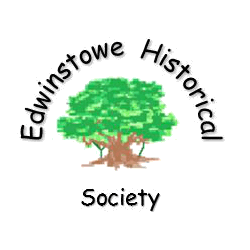 Edwinstowe Historical Society
Edwinstowe Historical Society